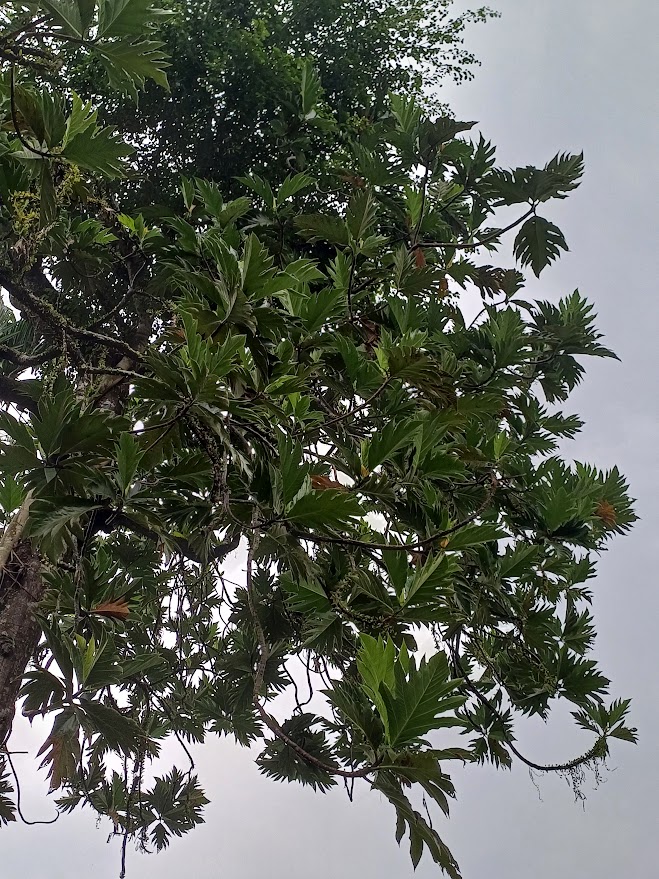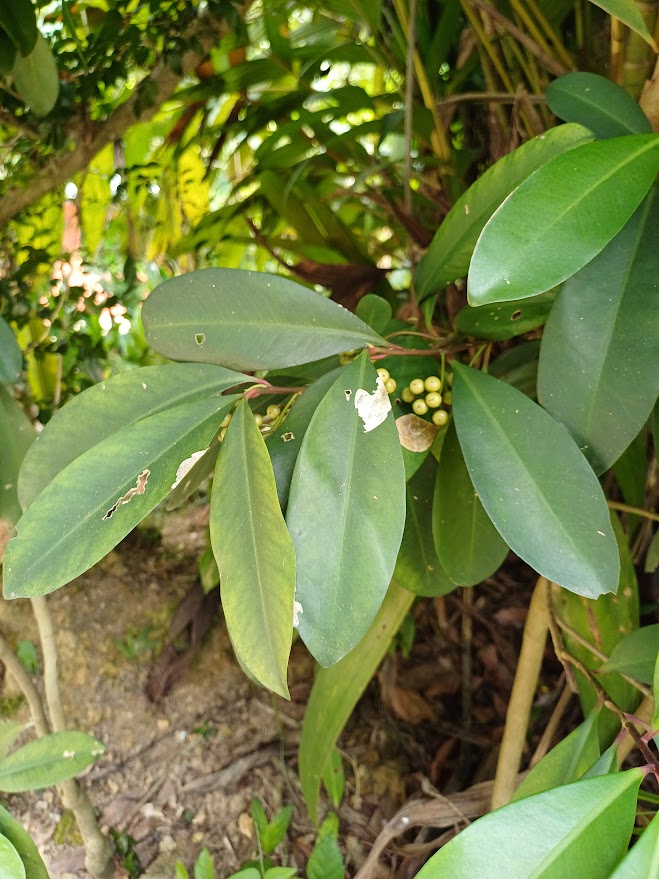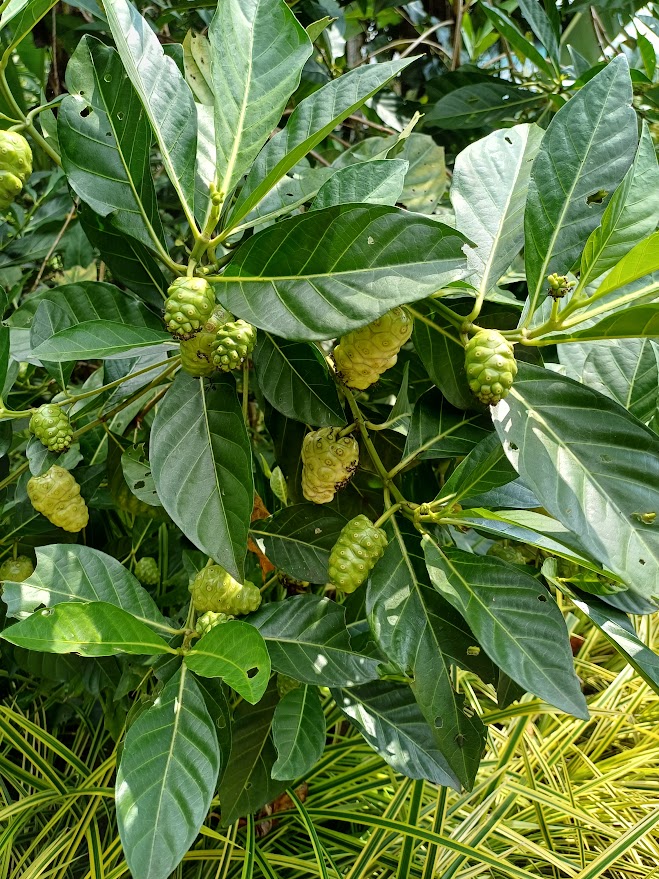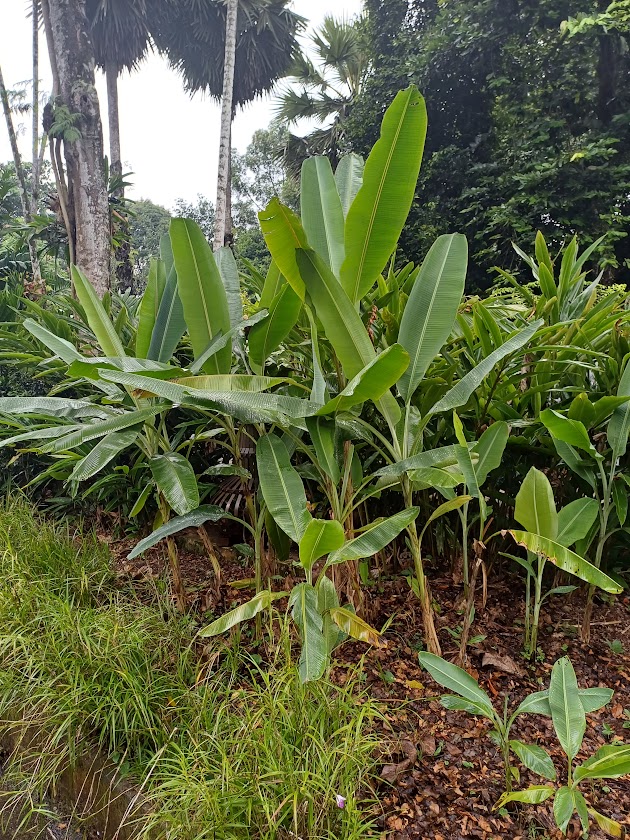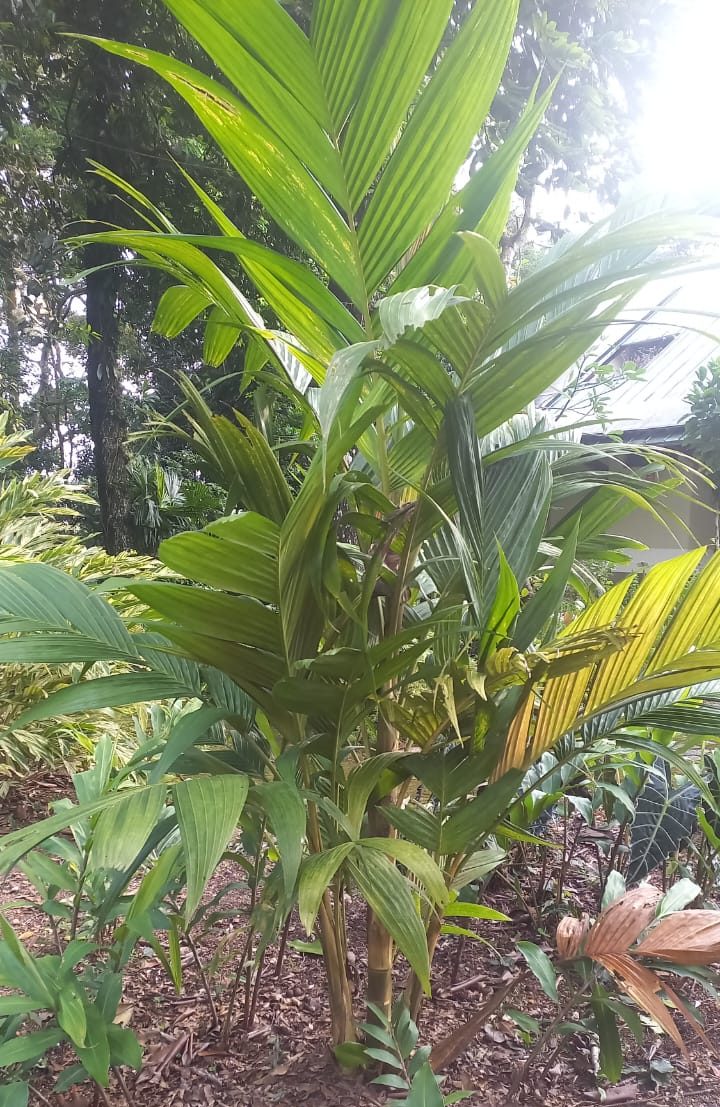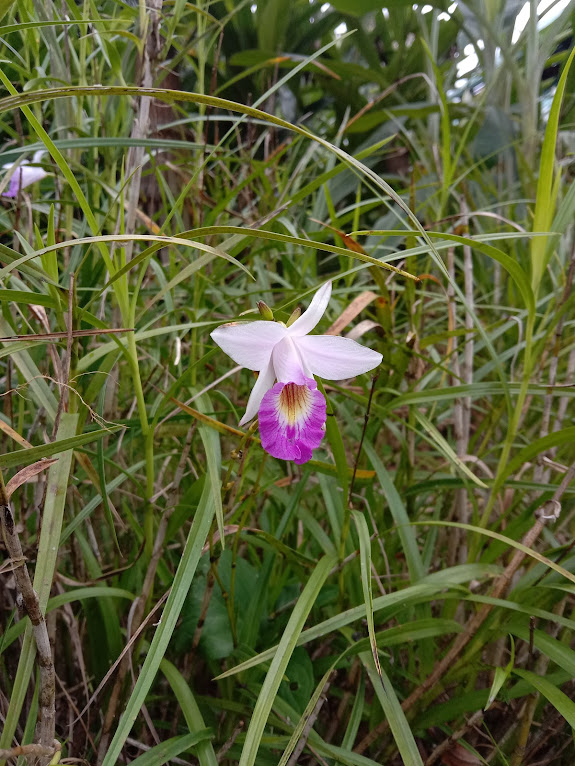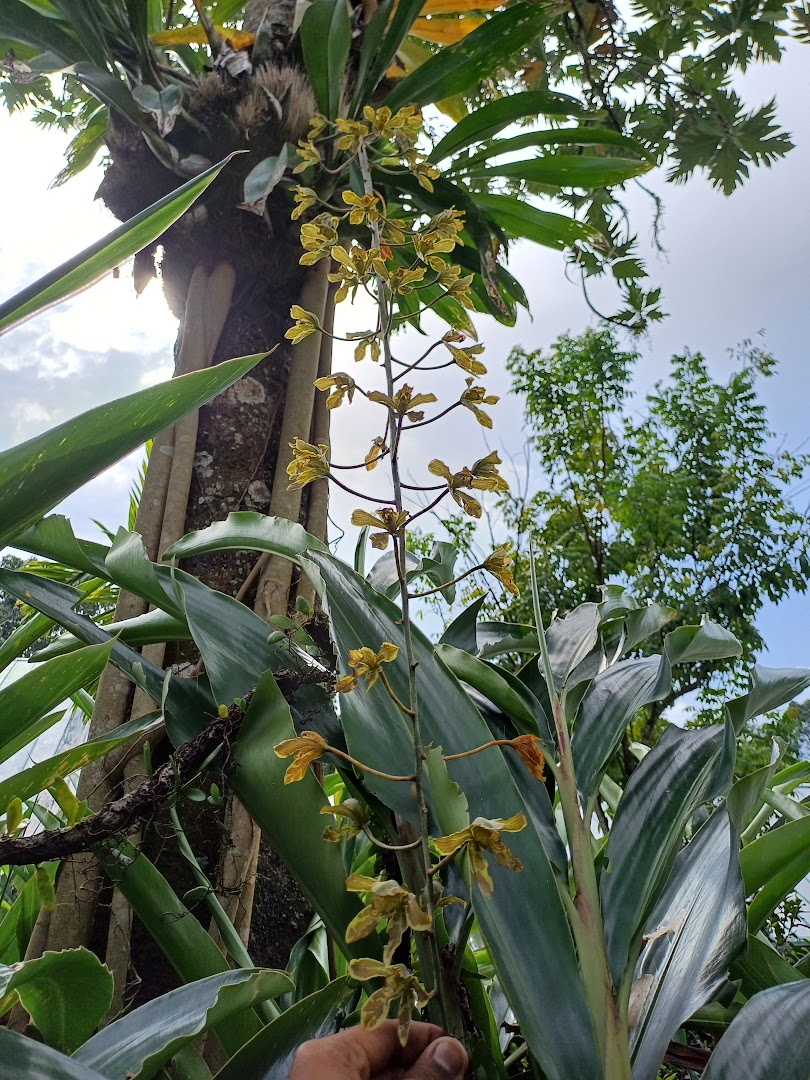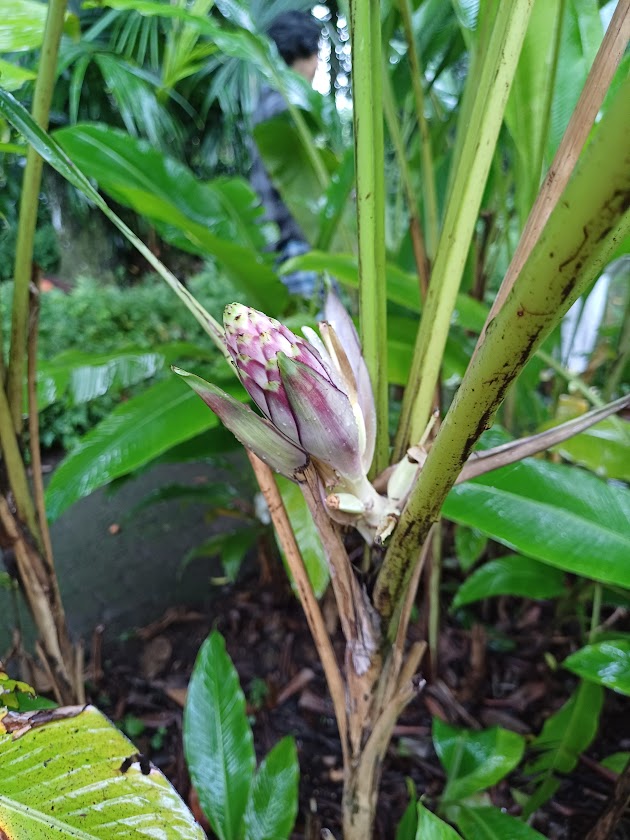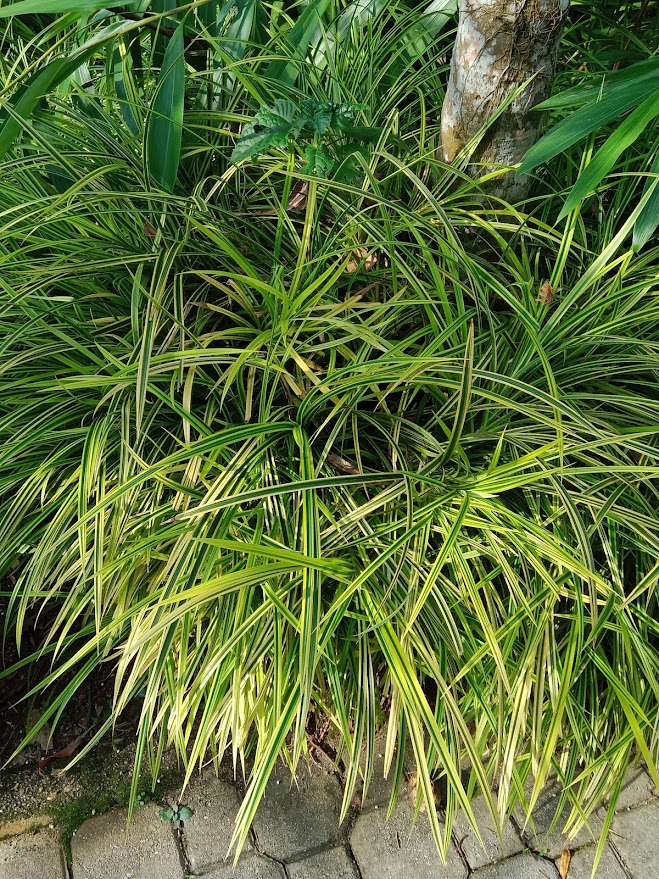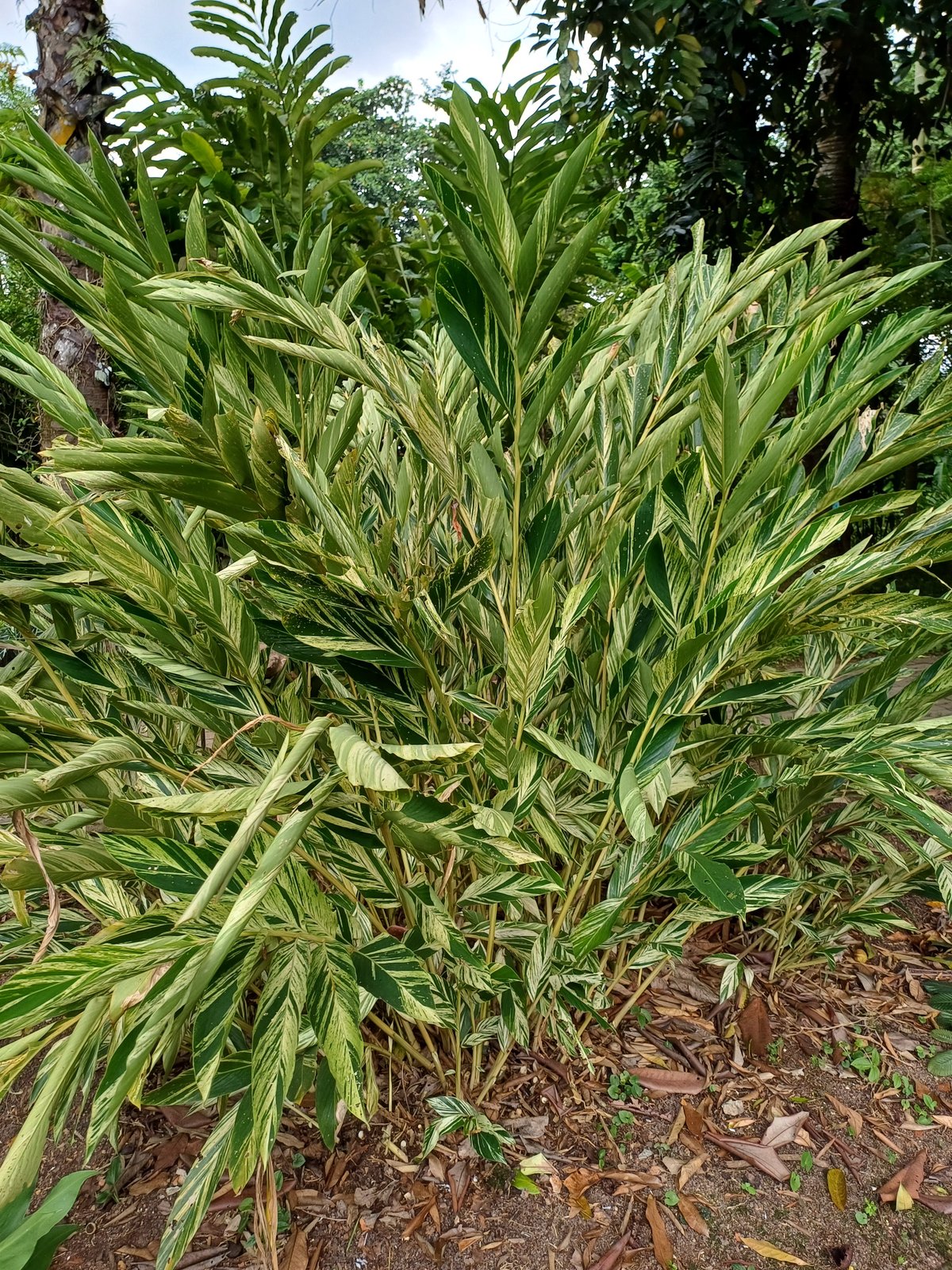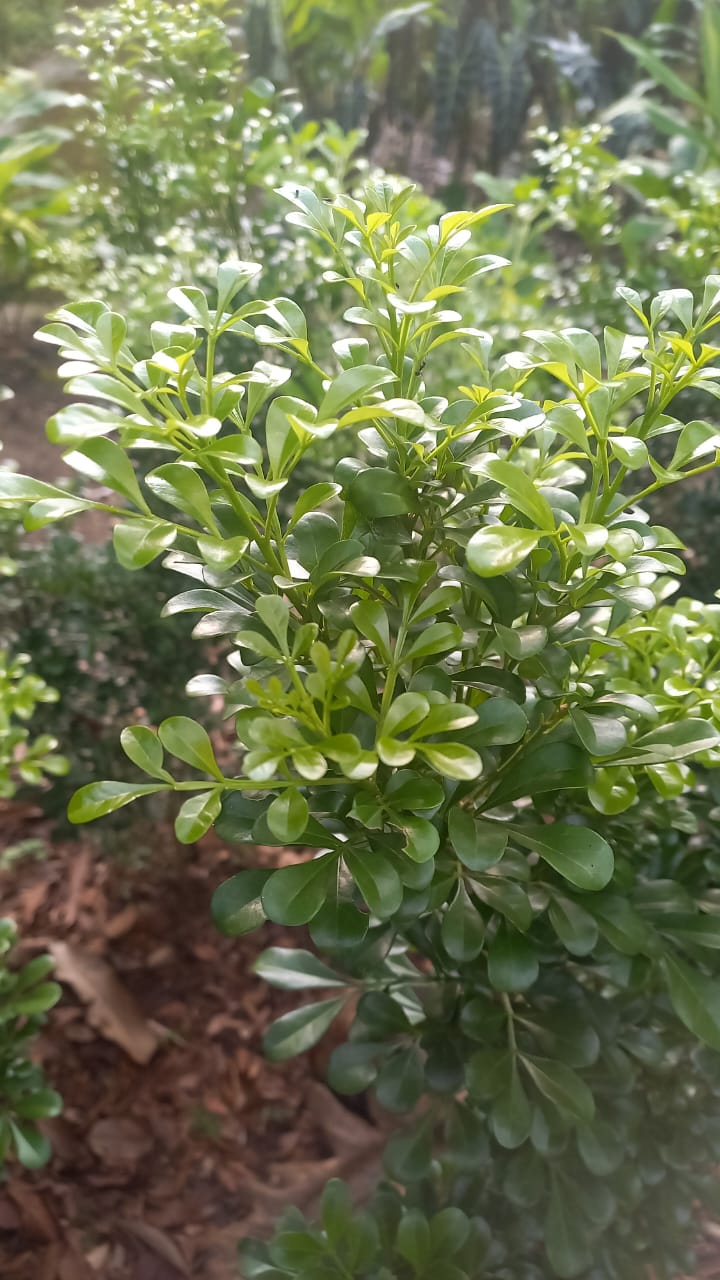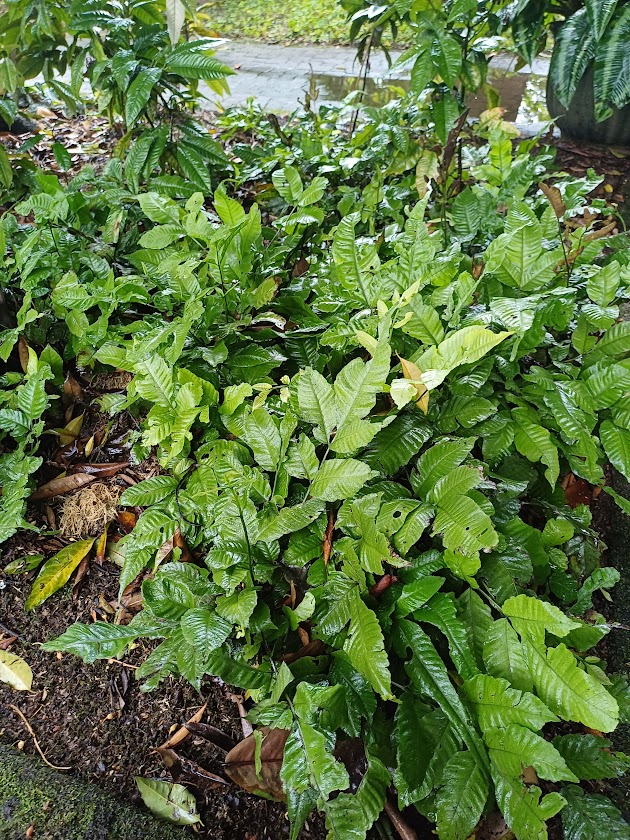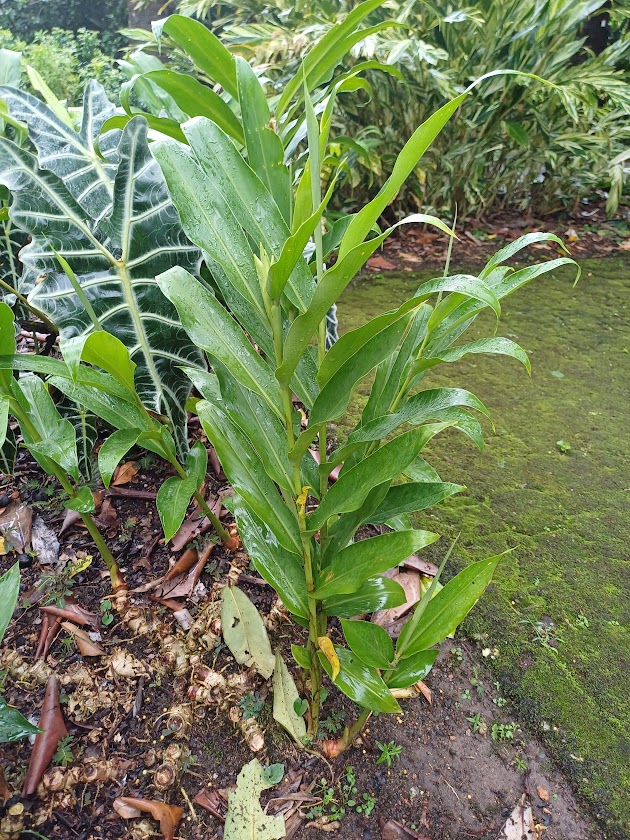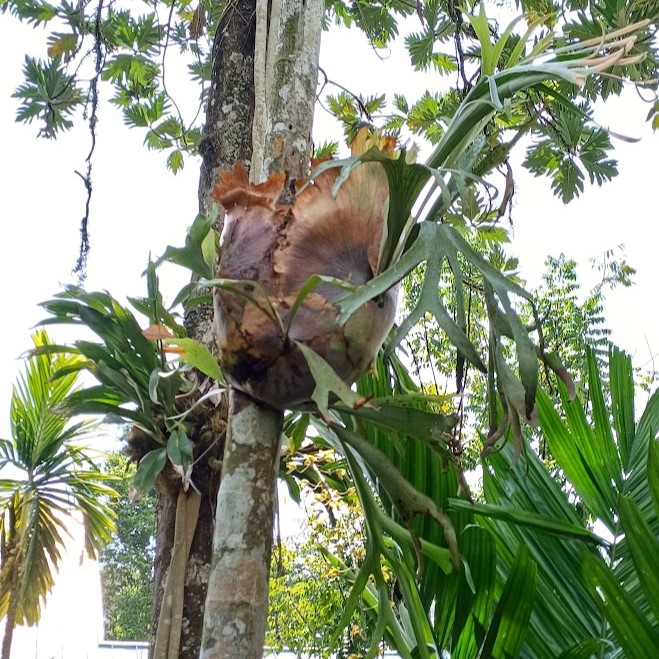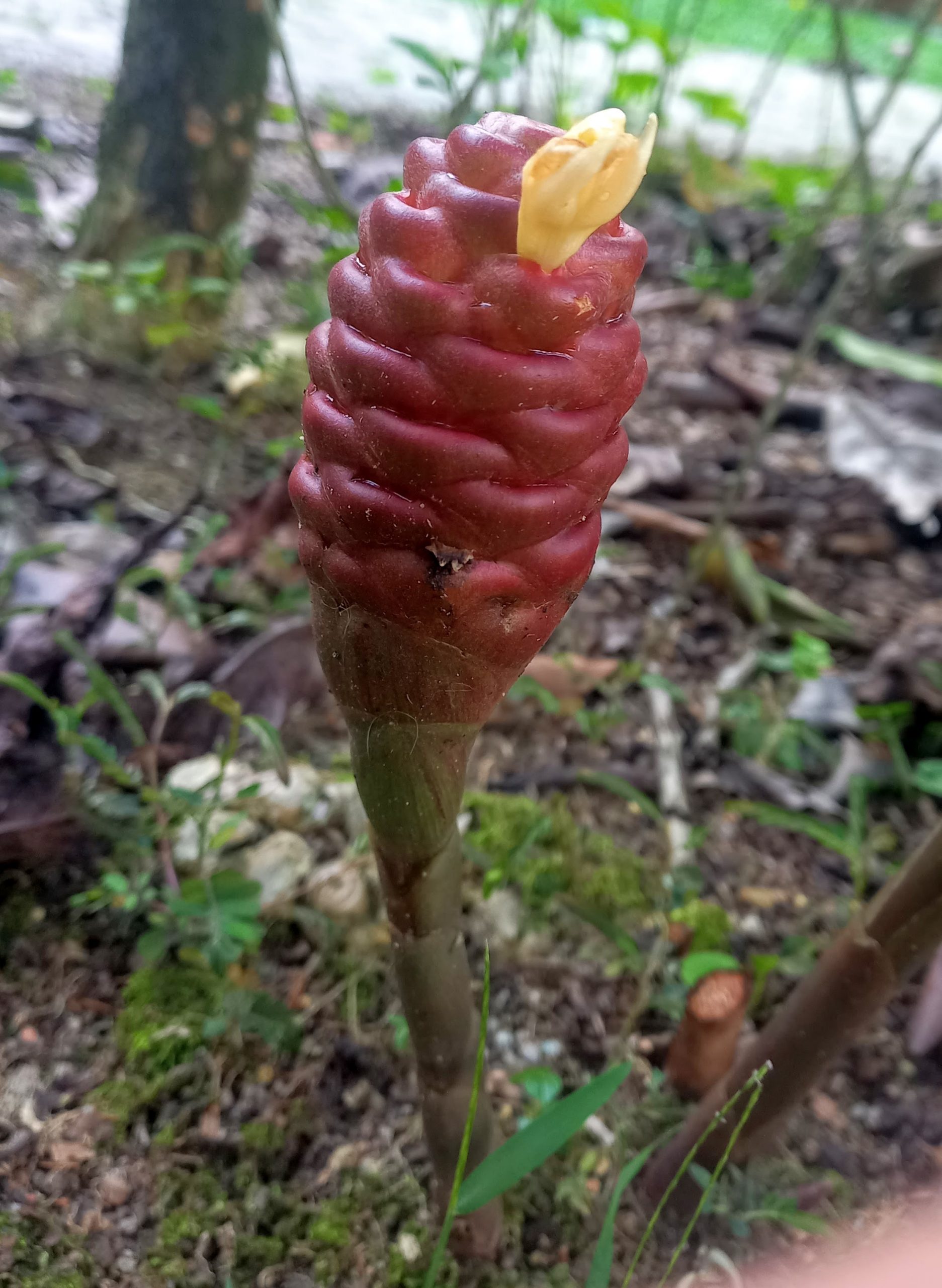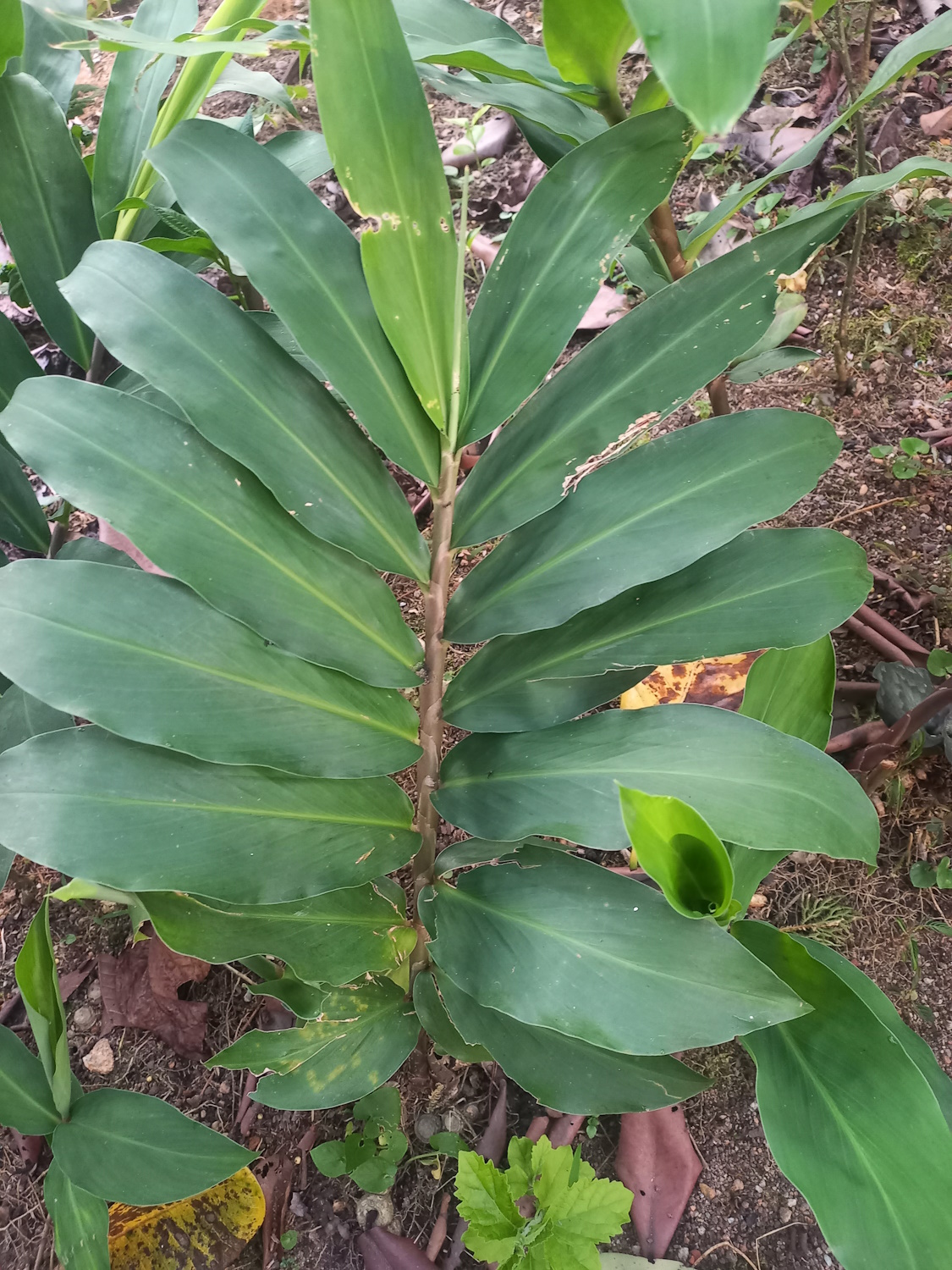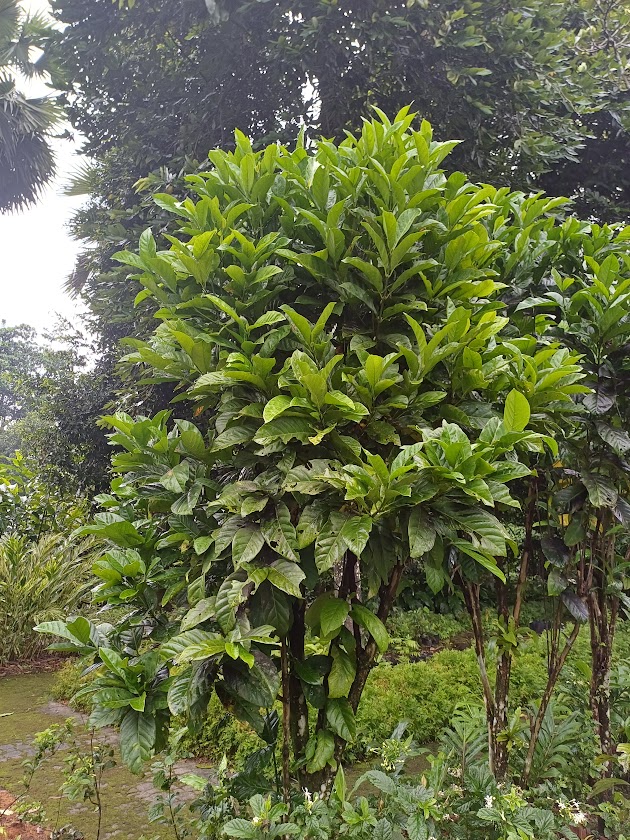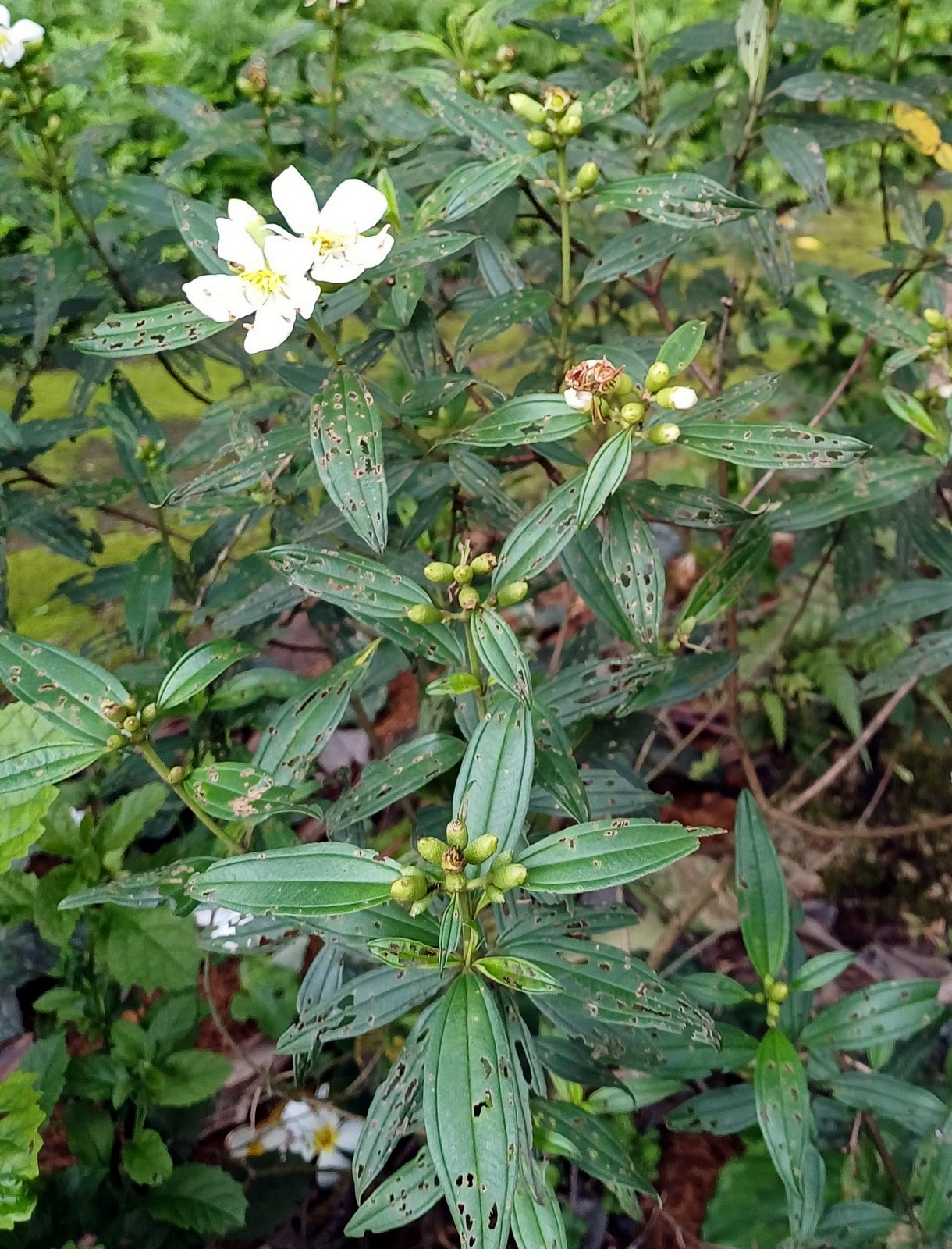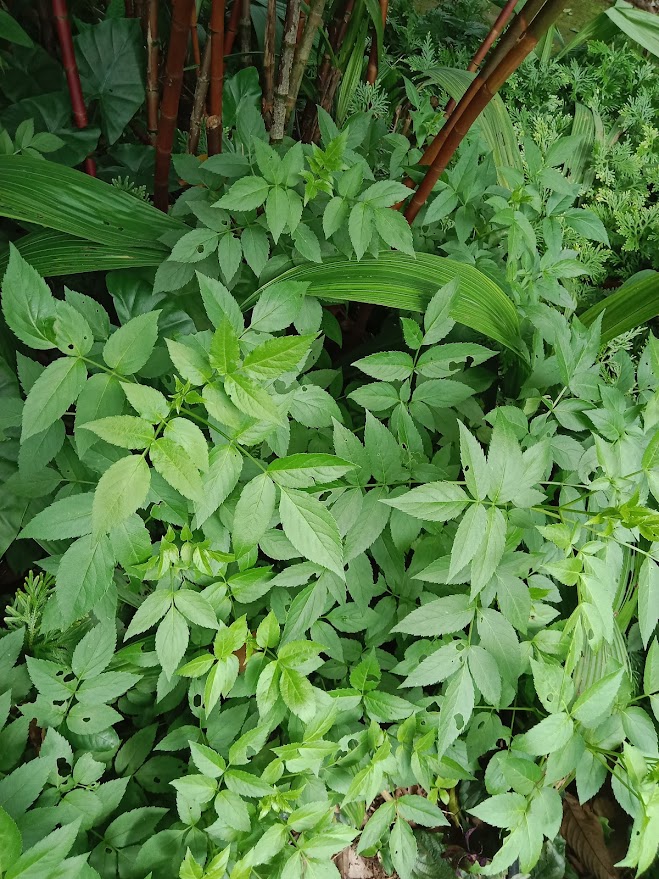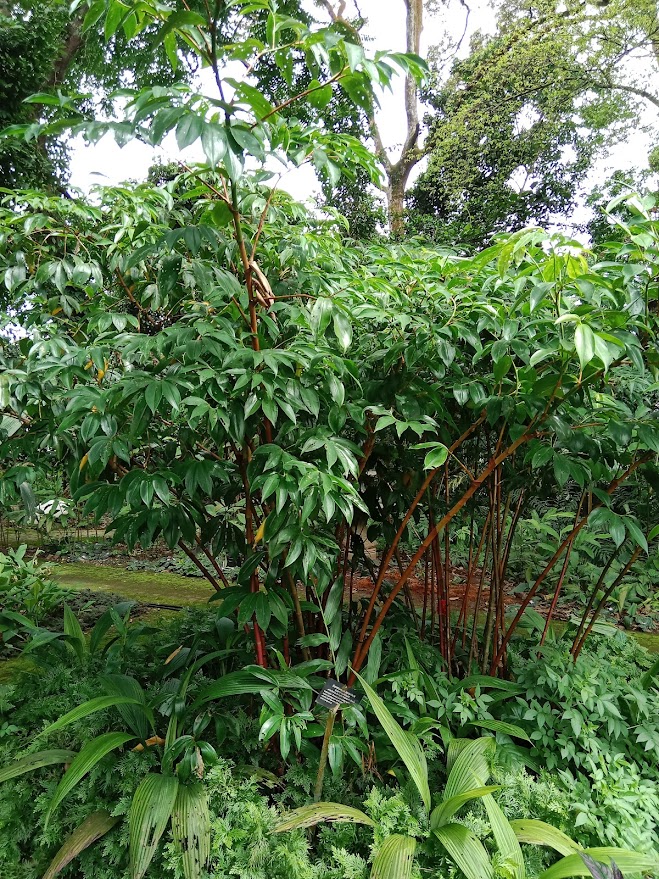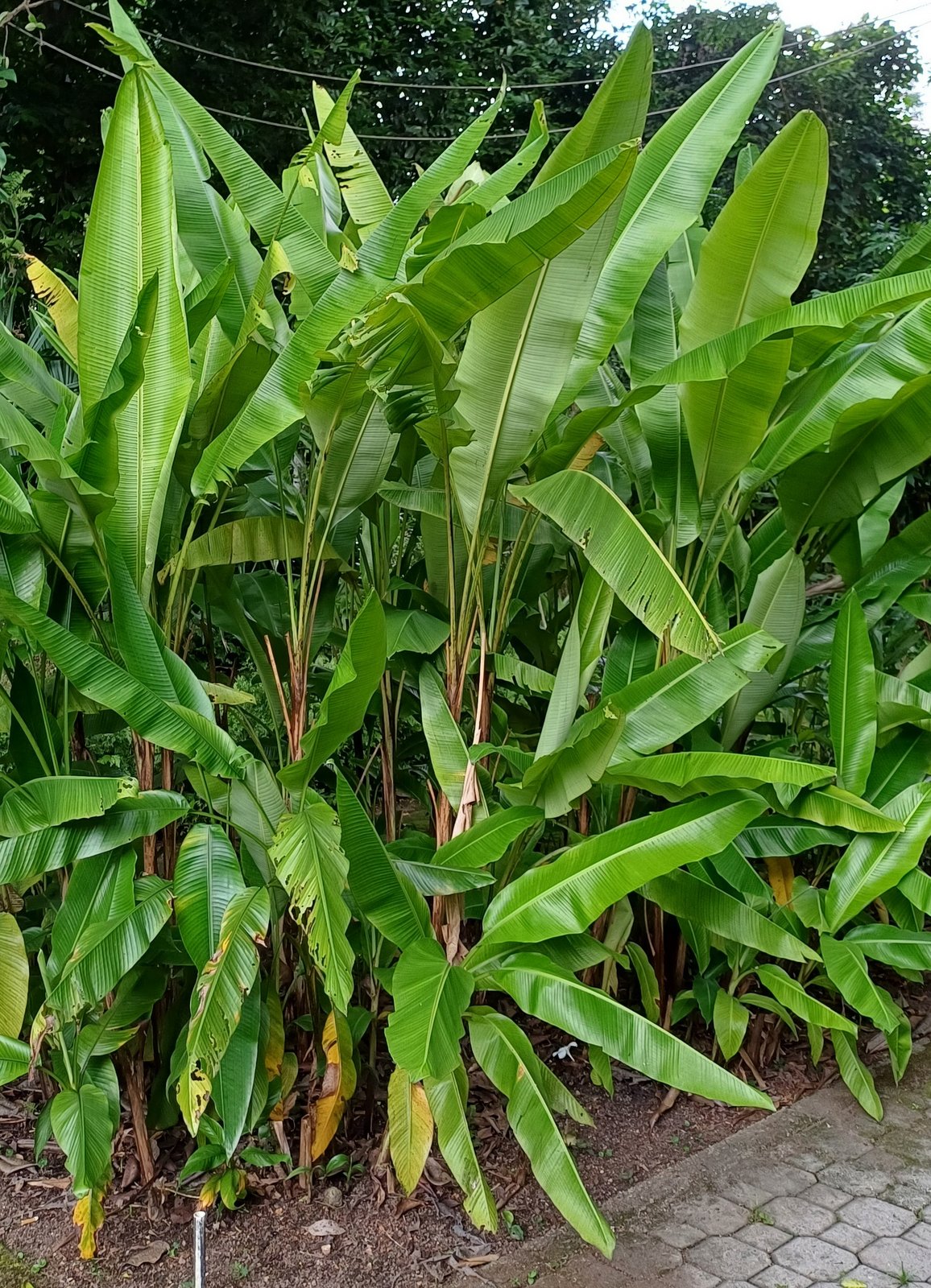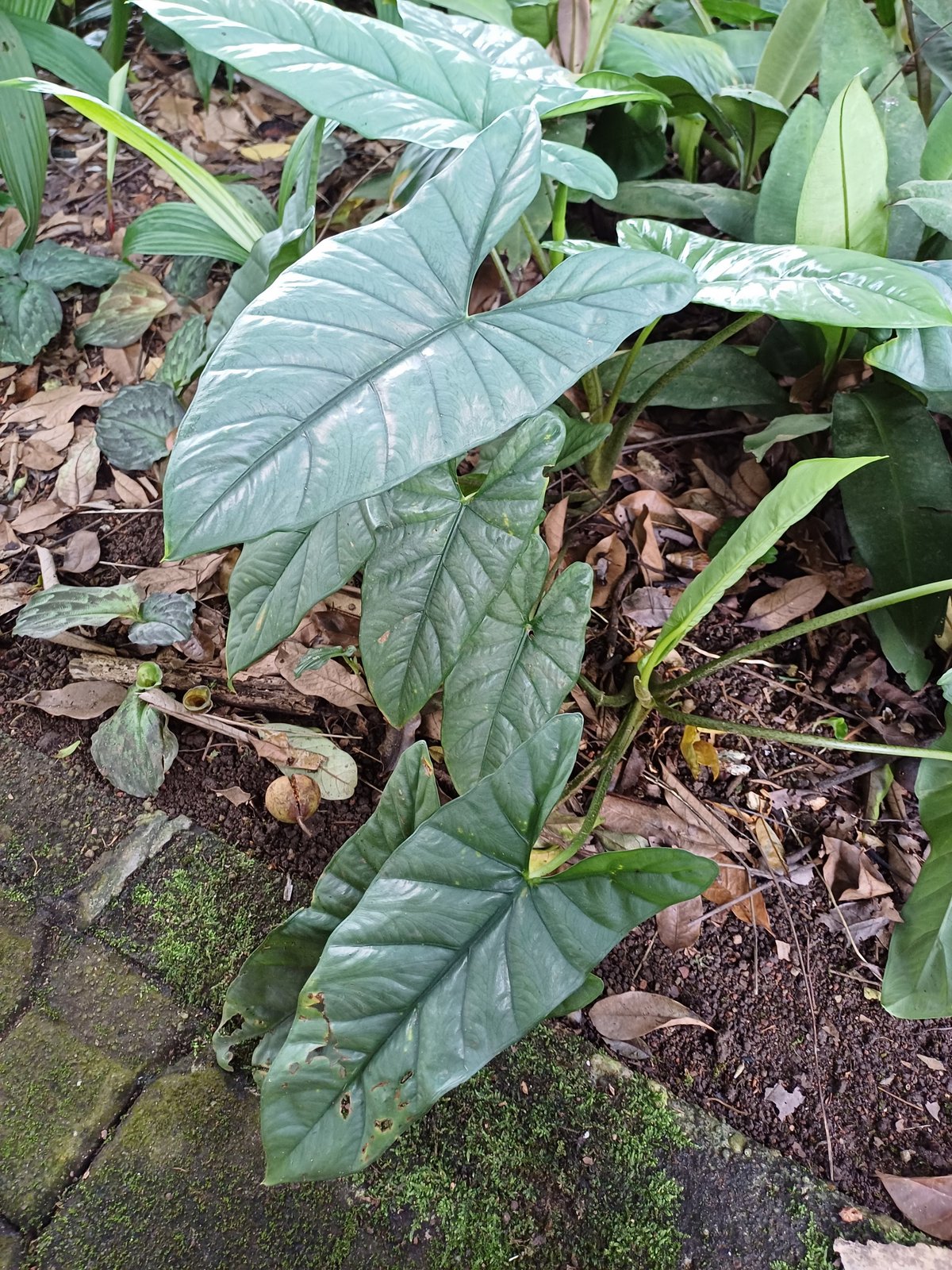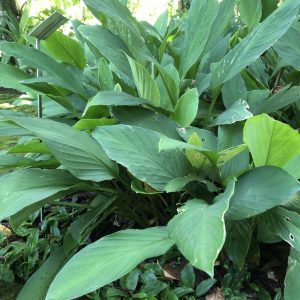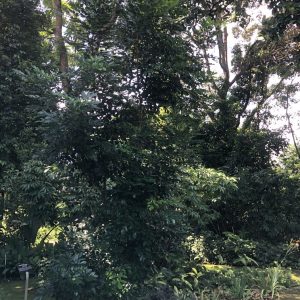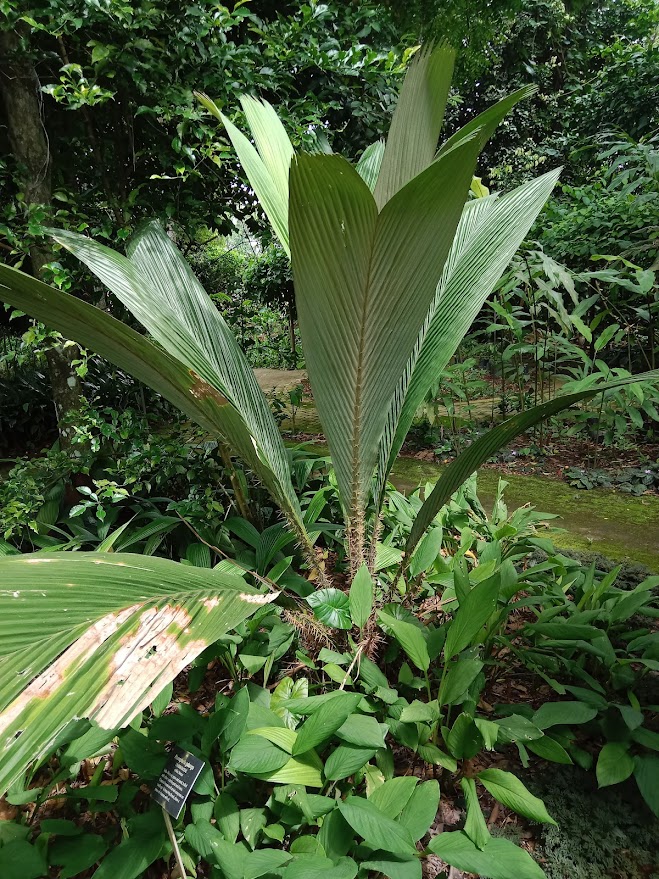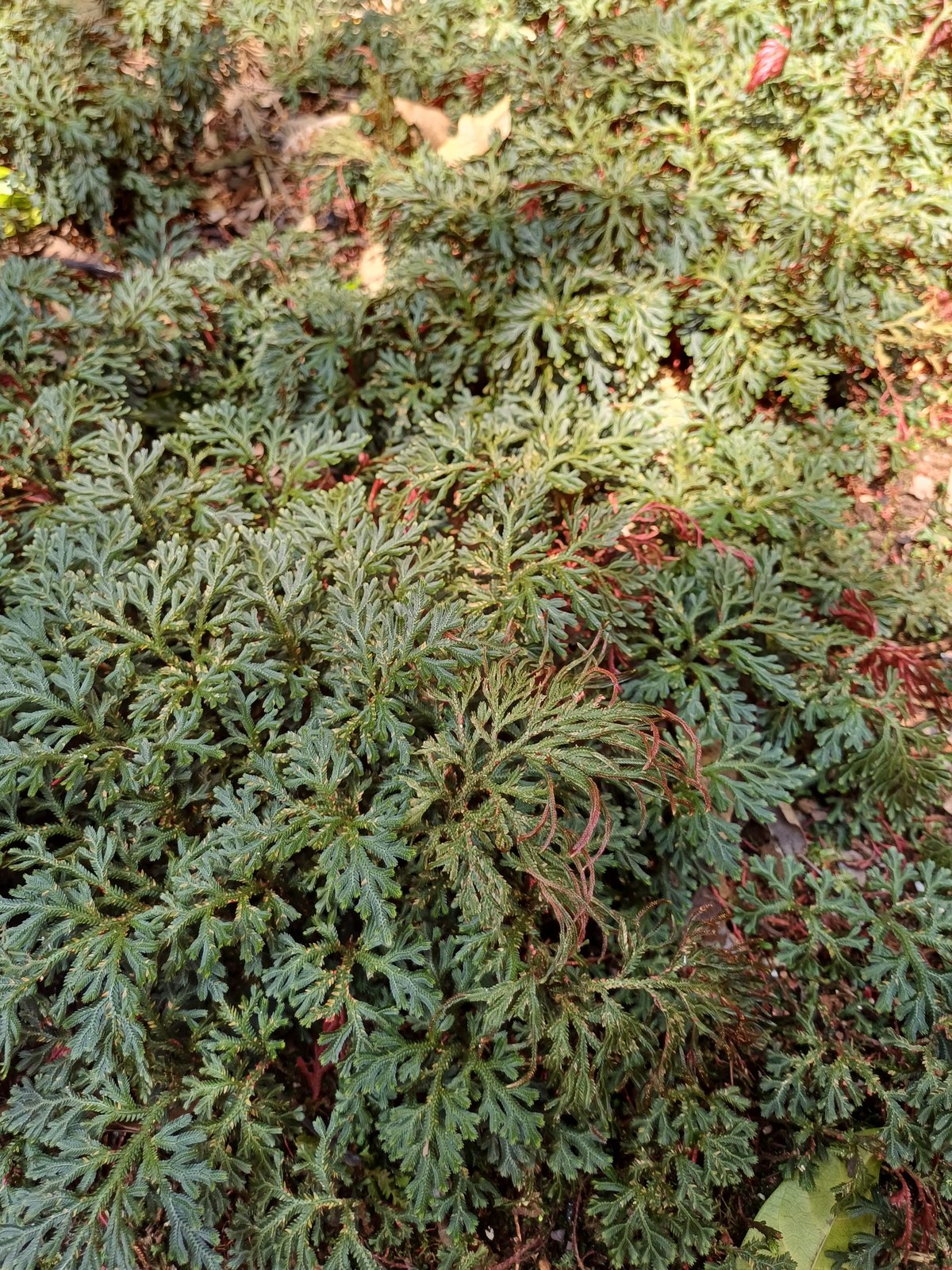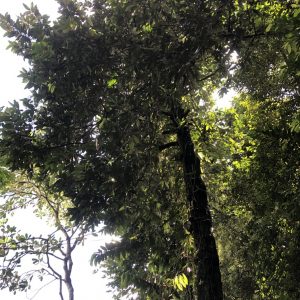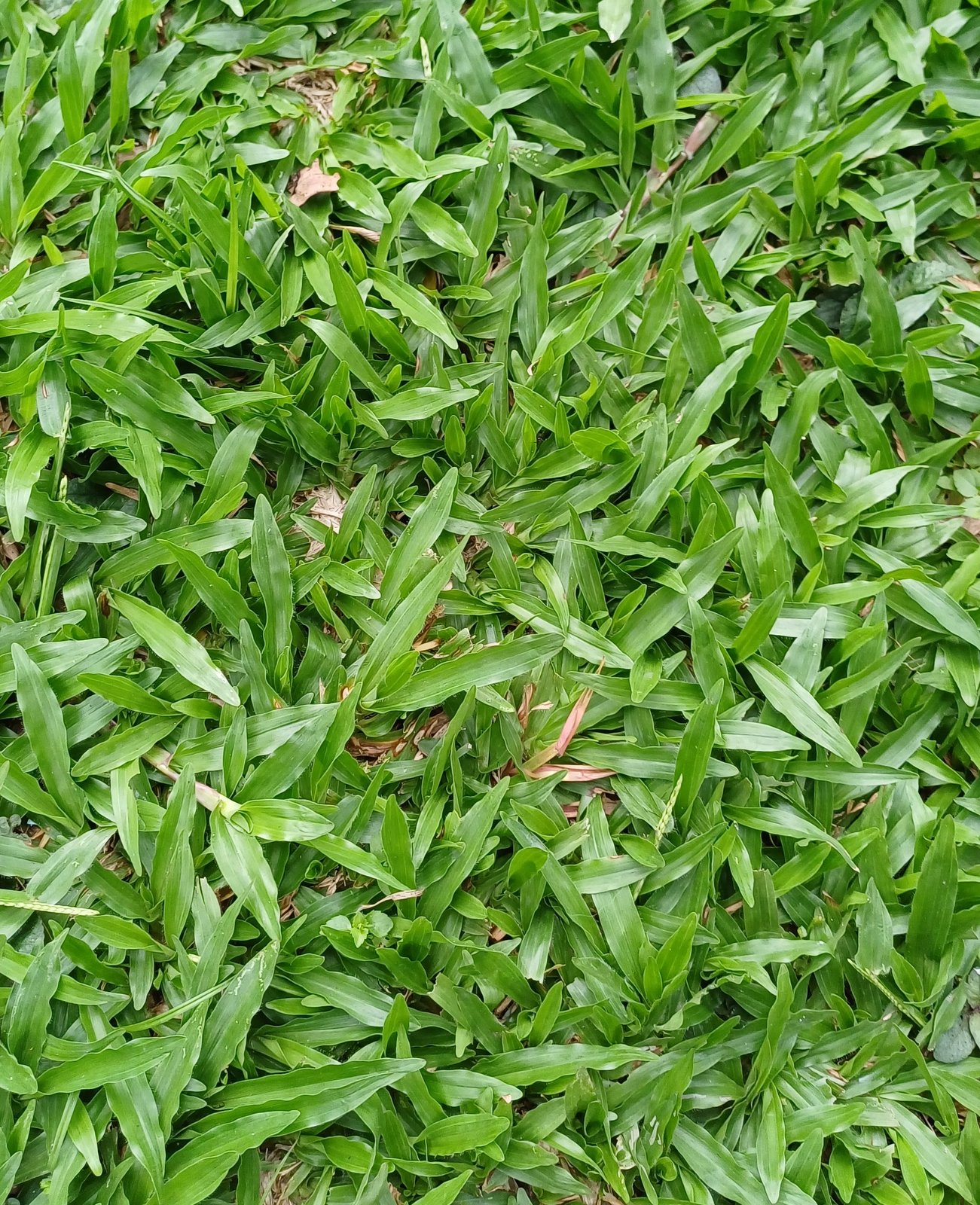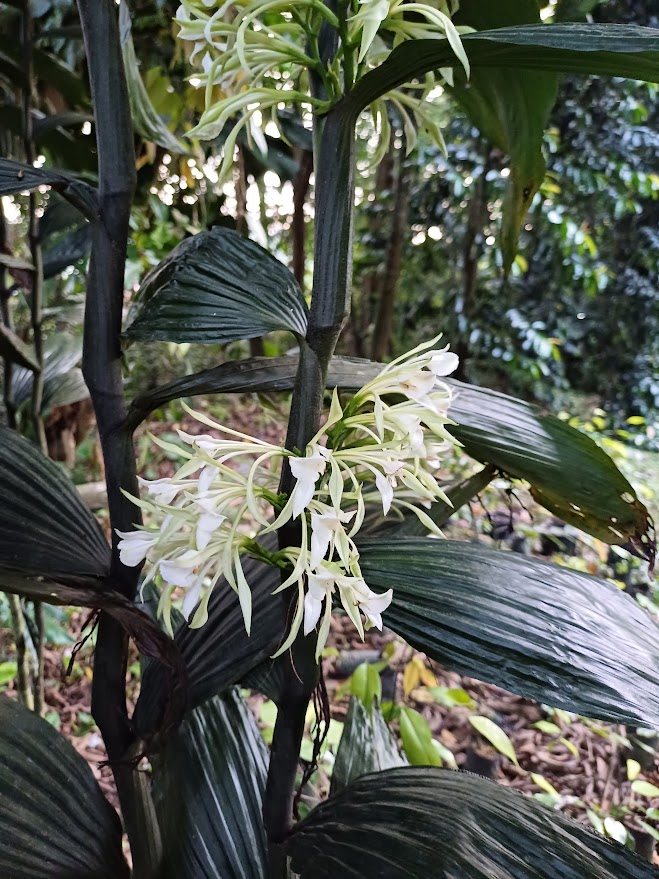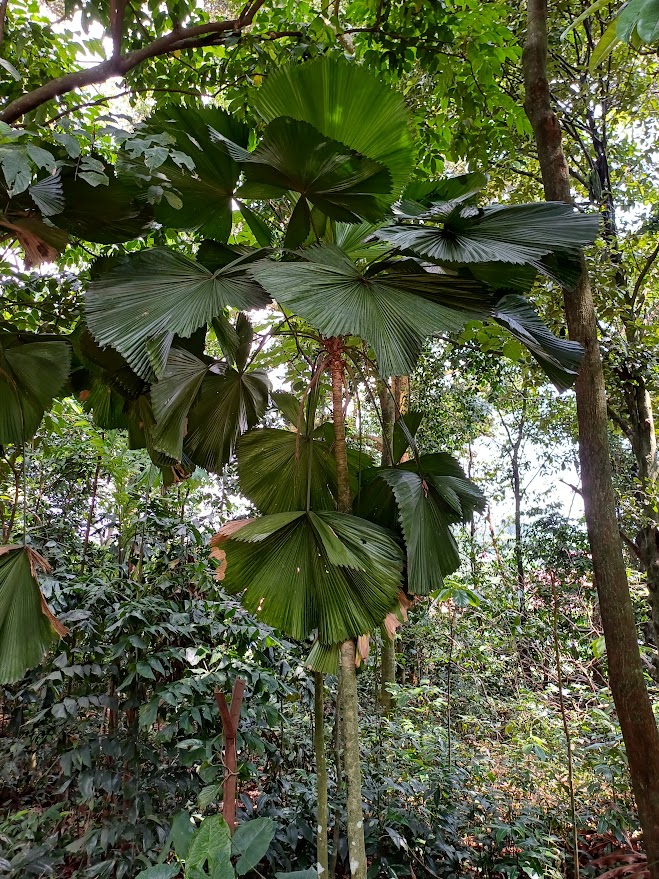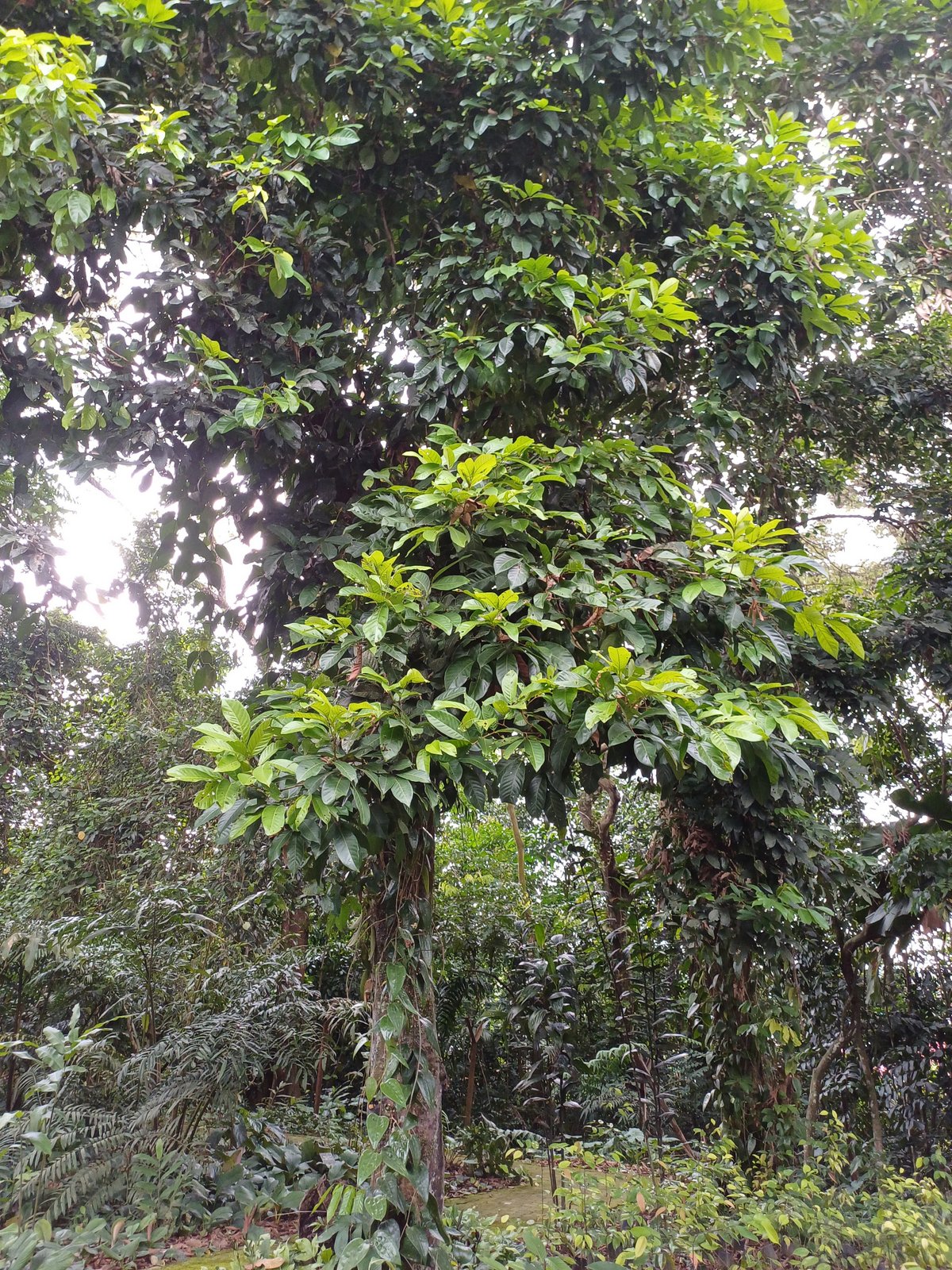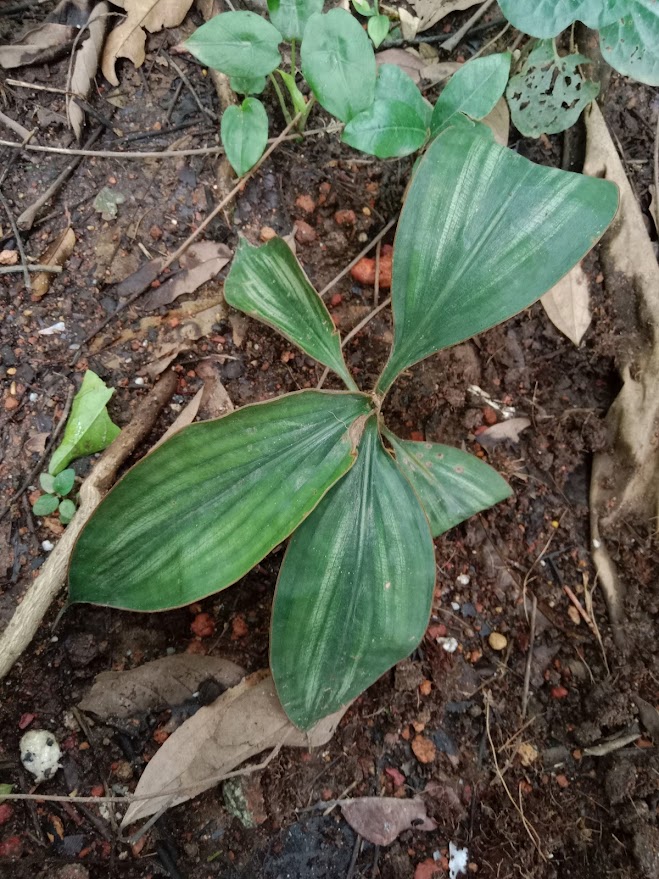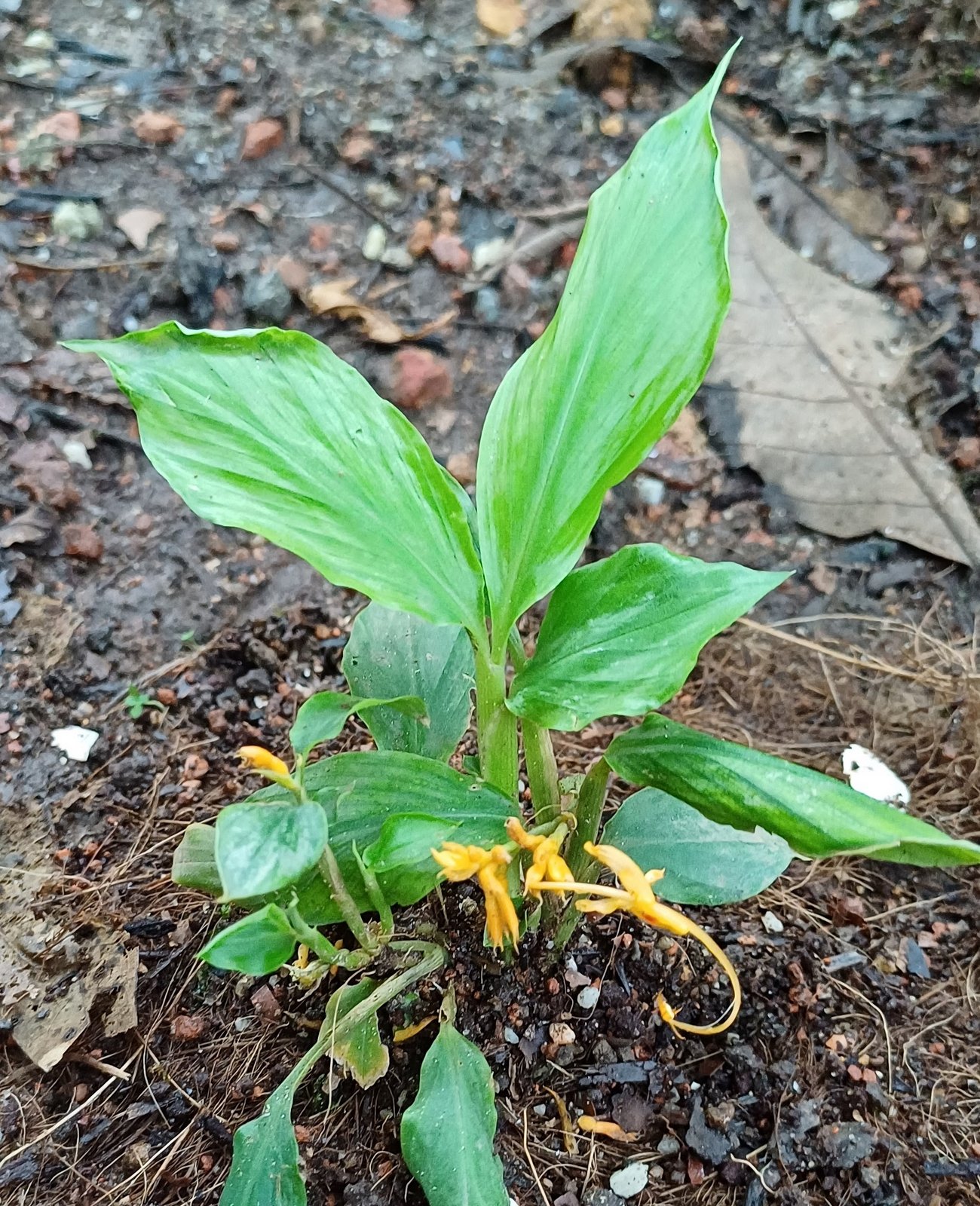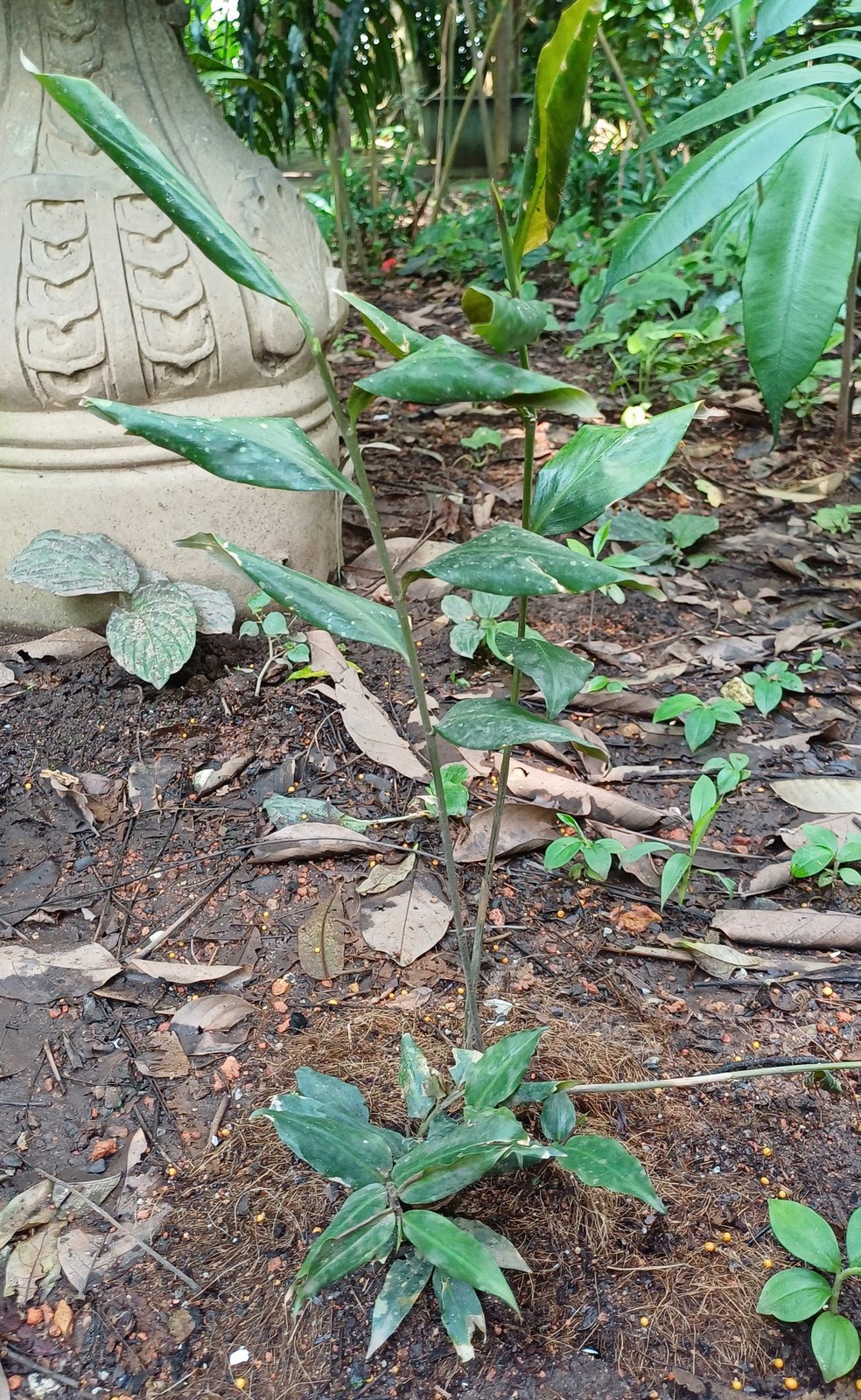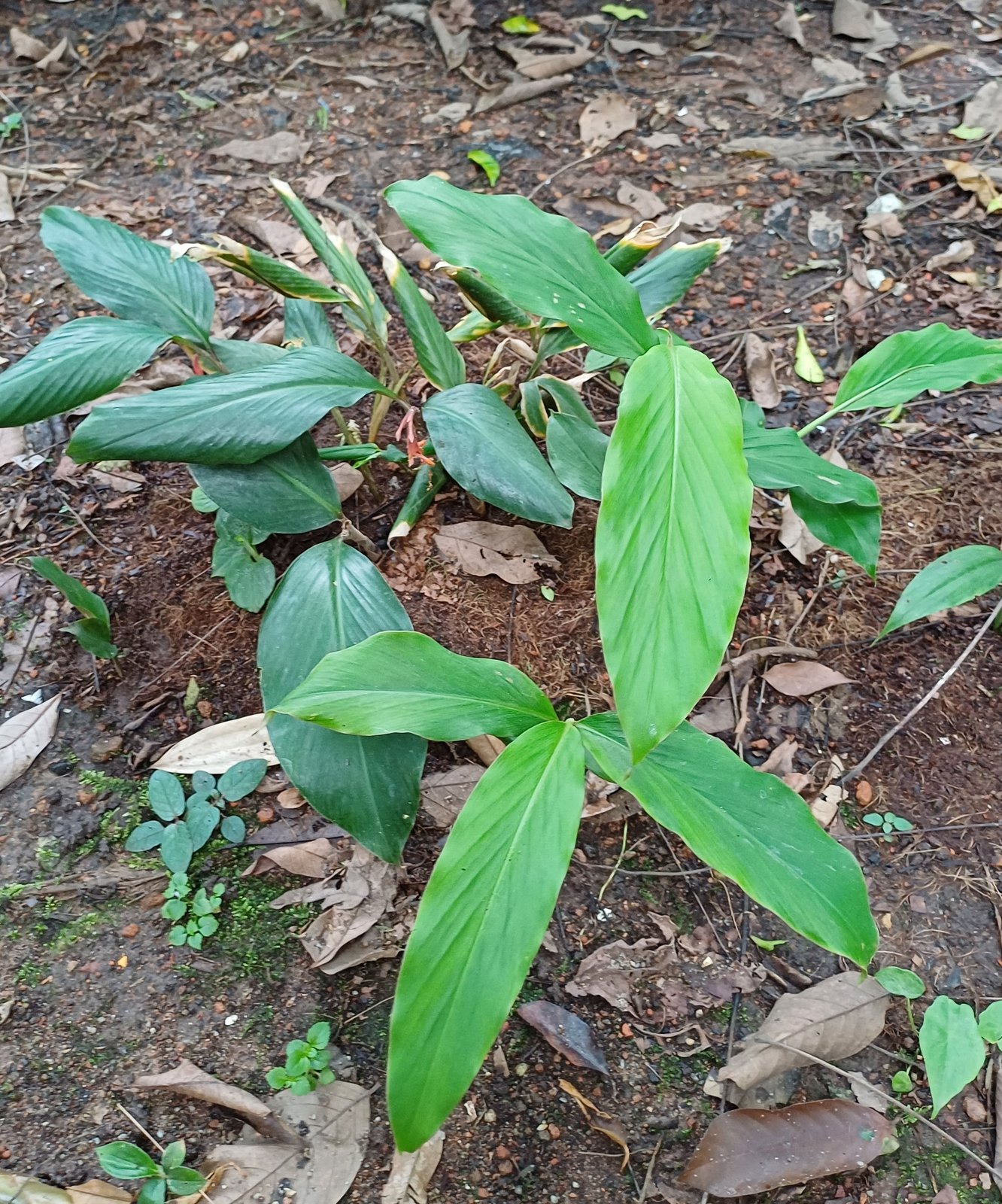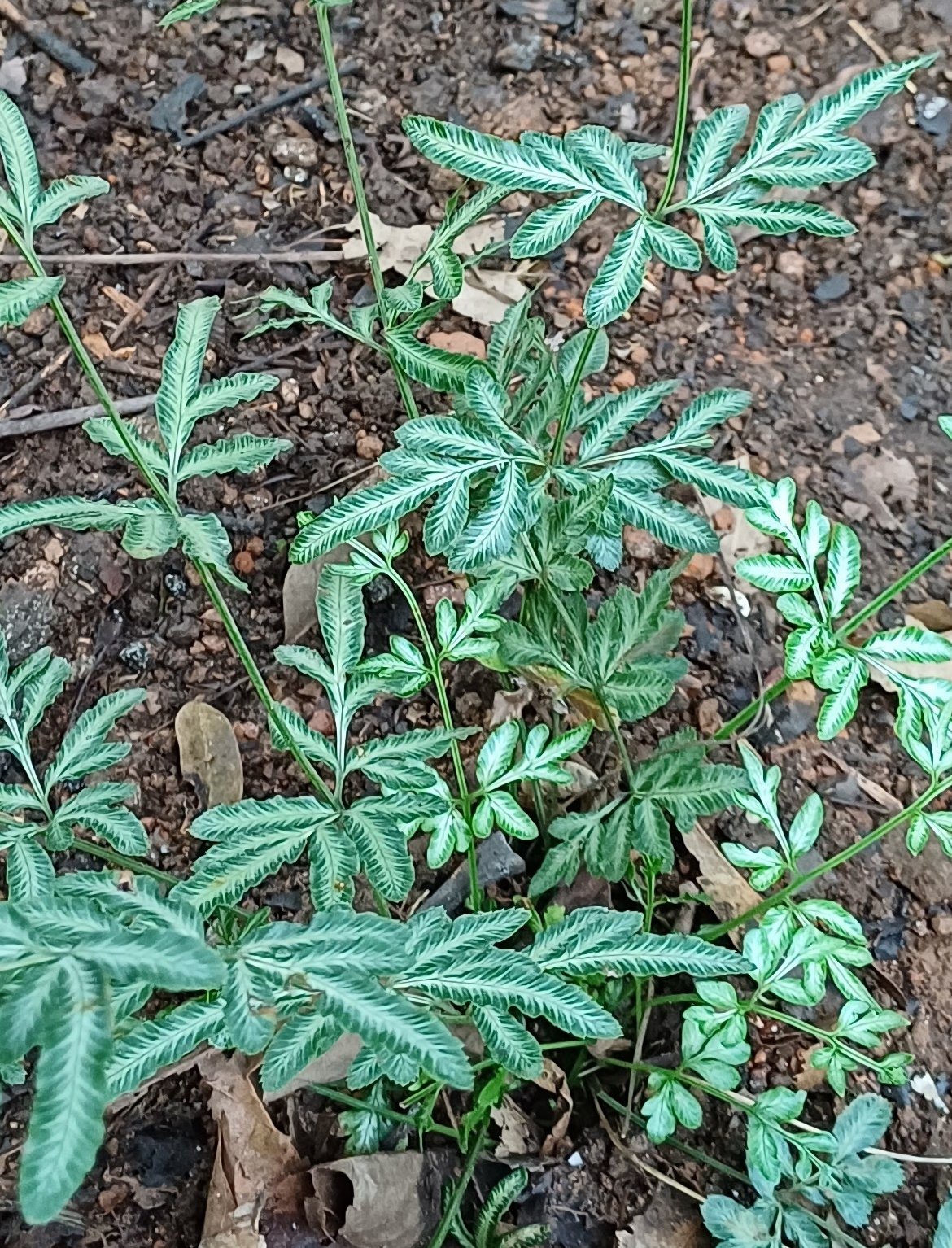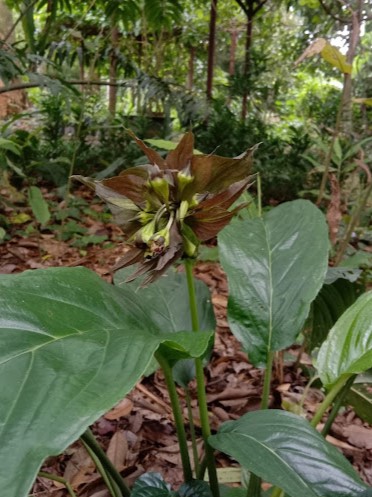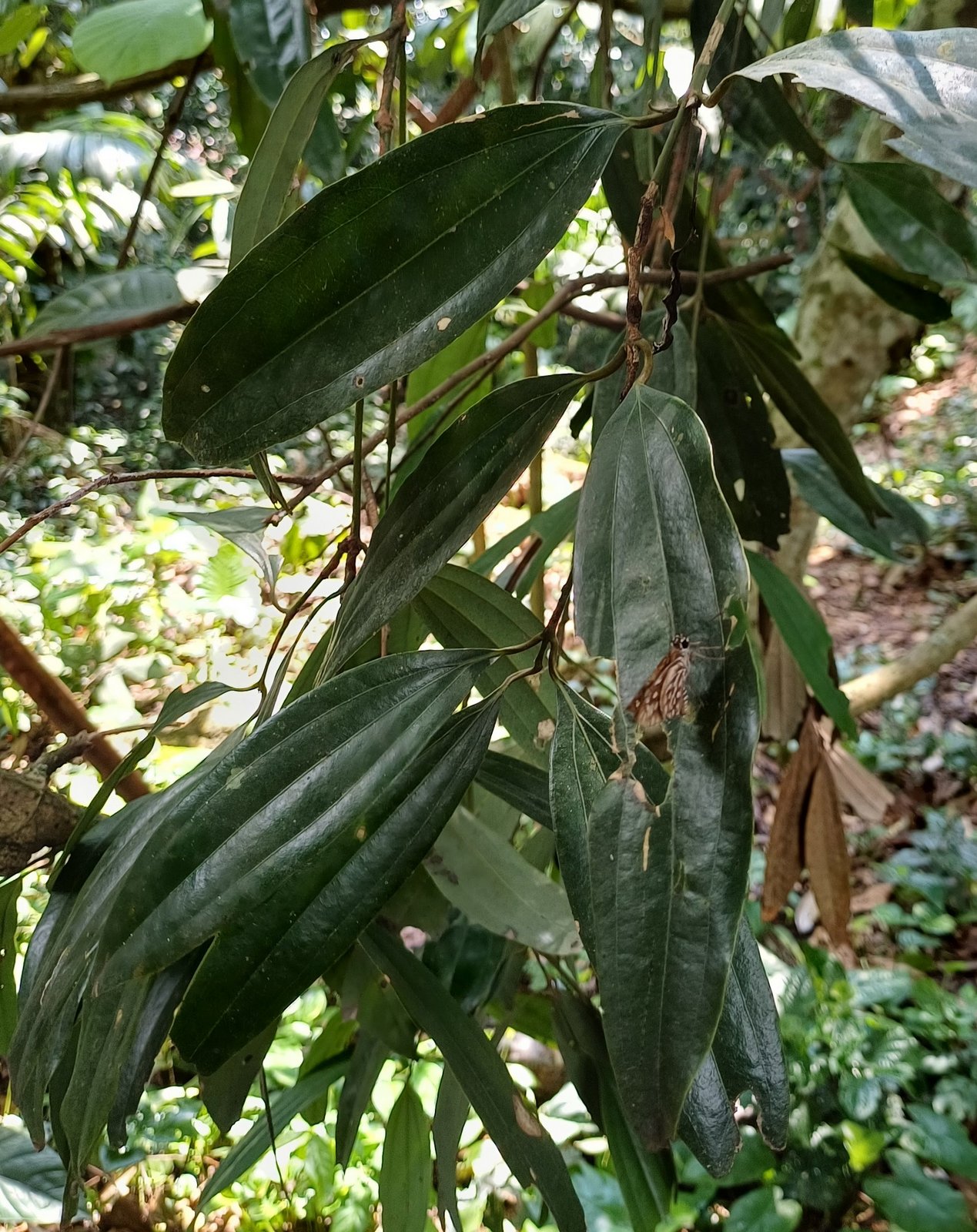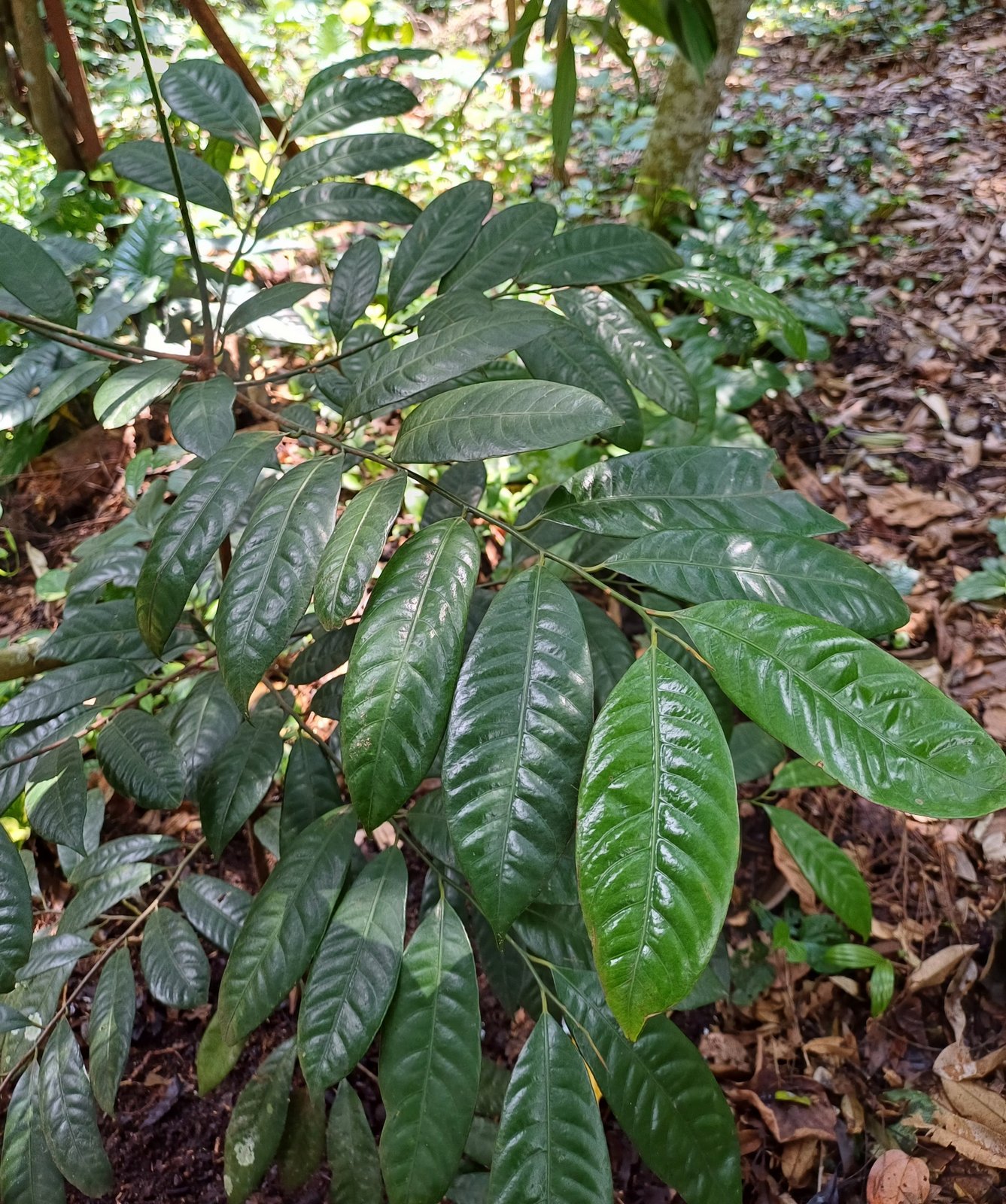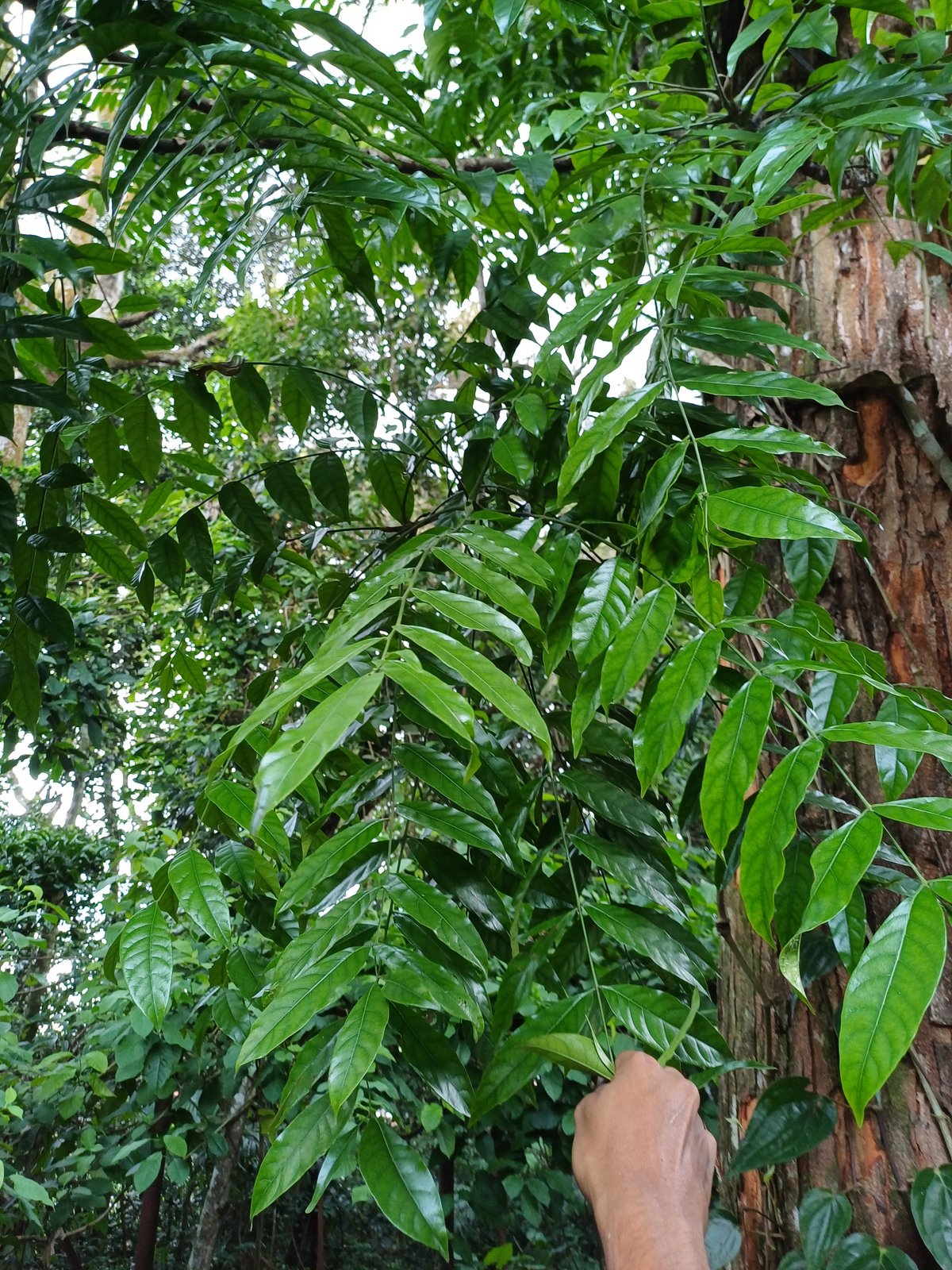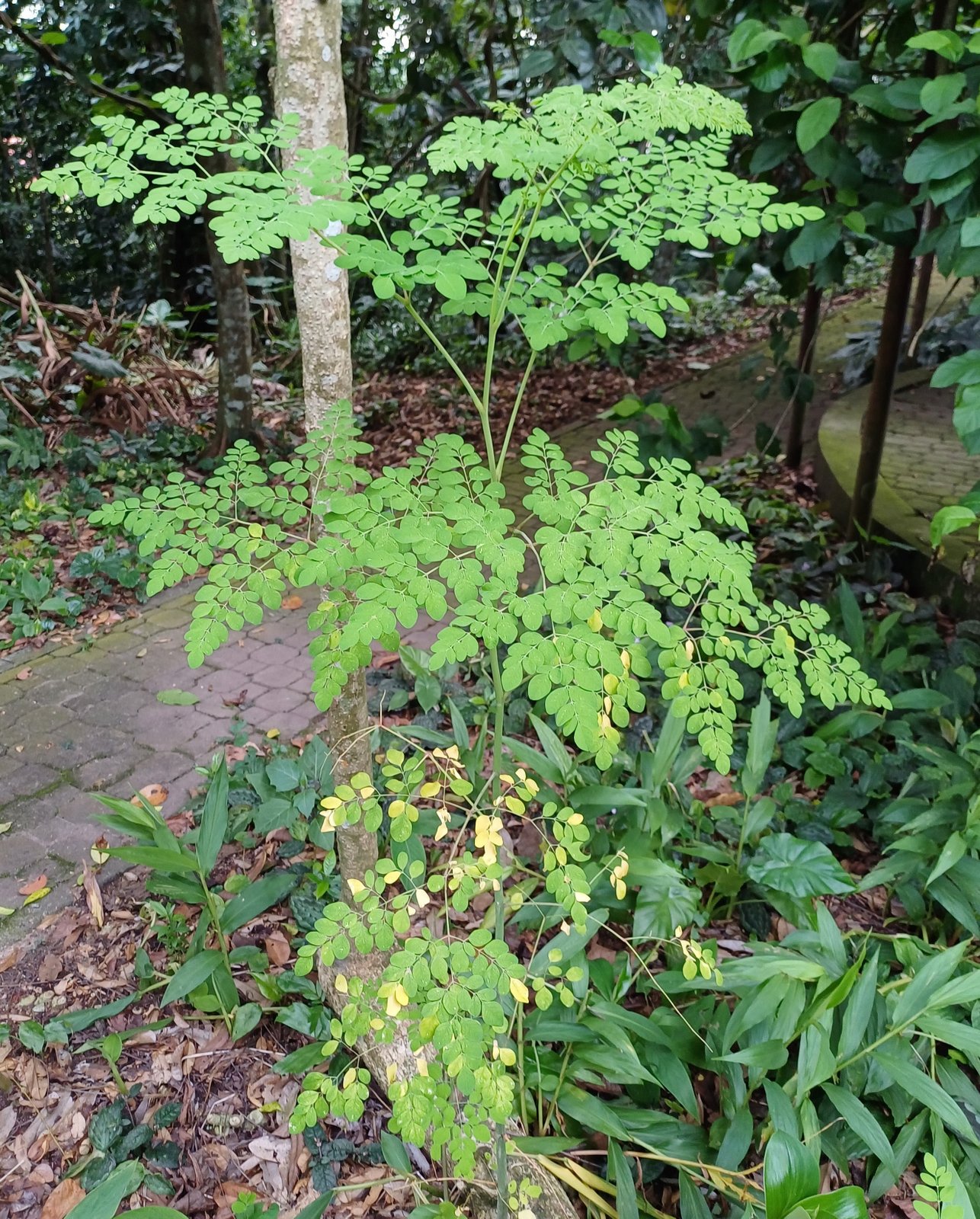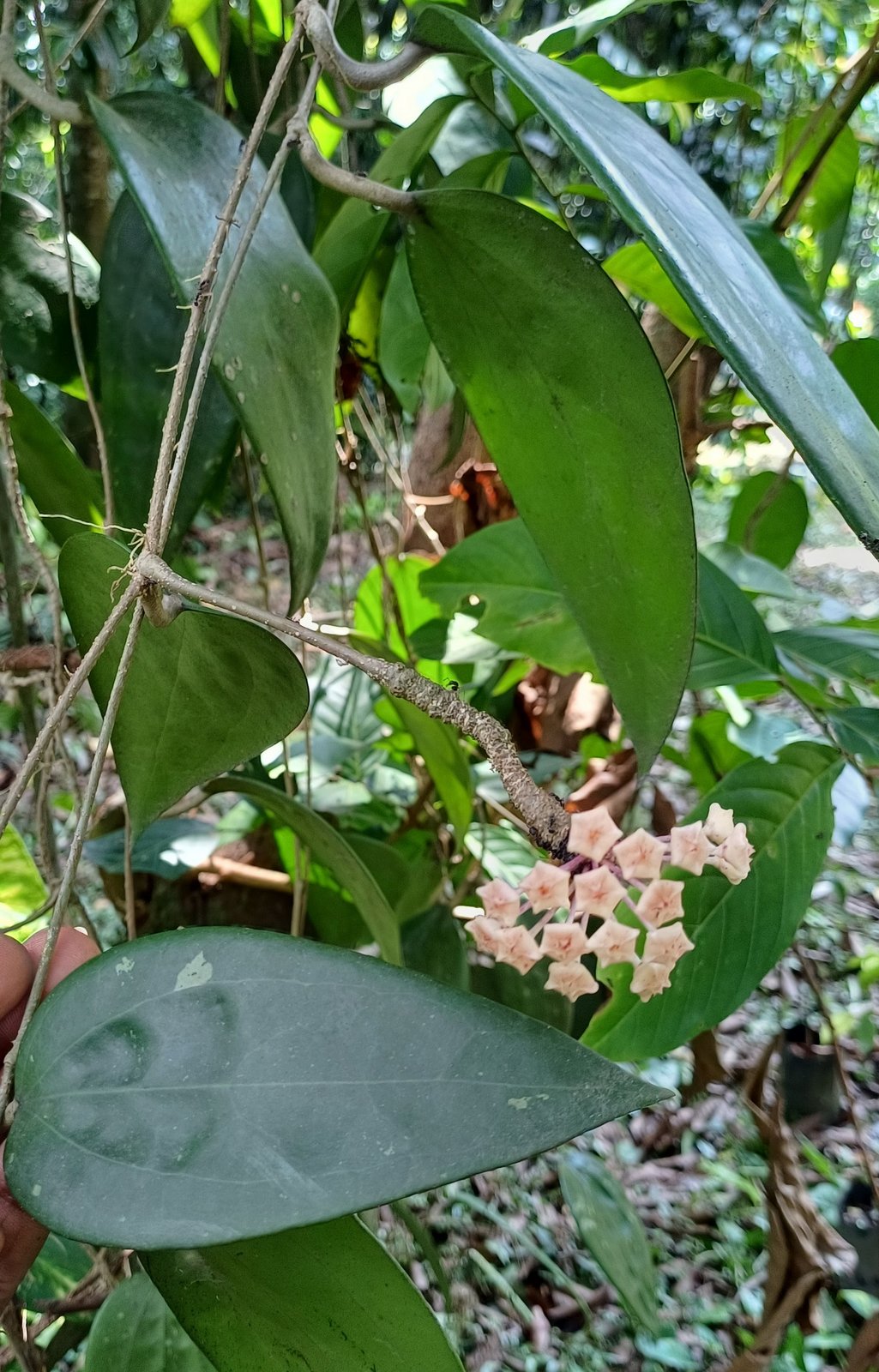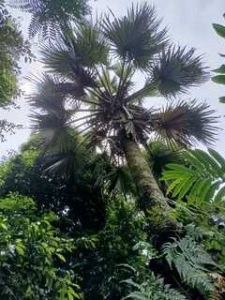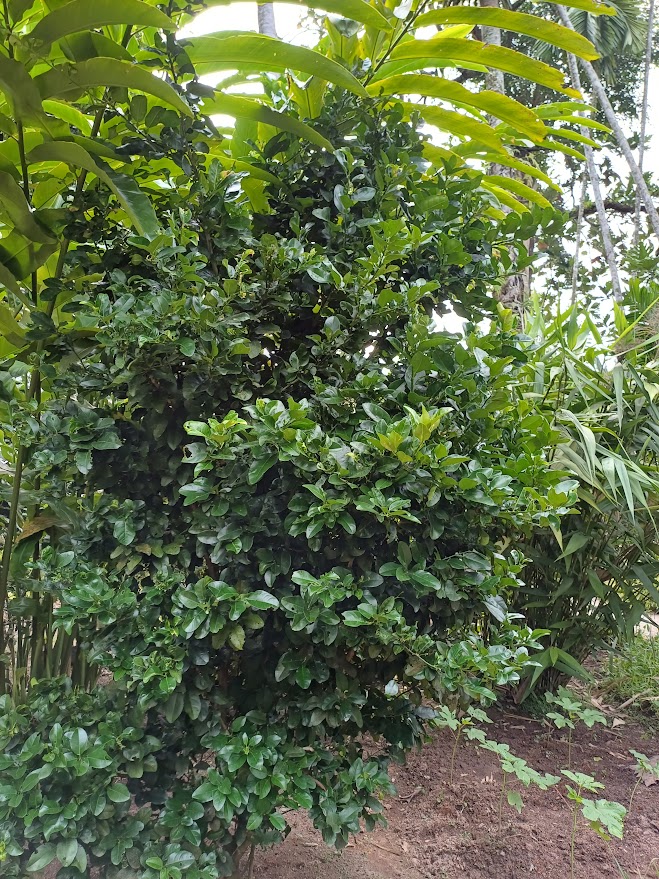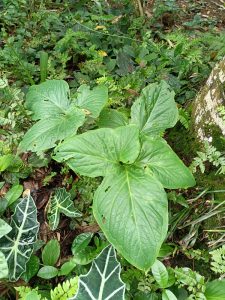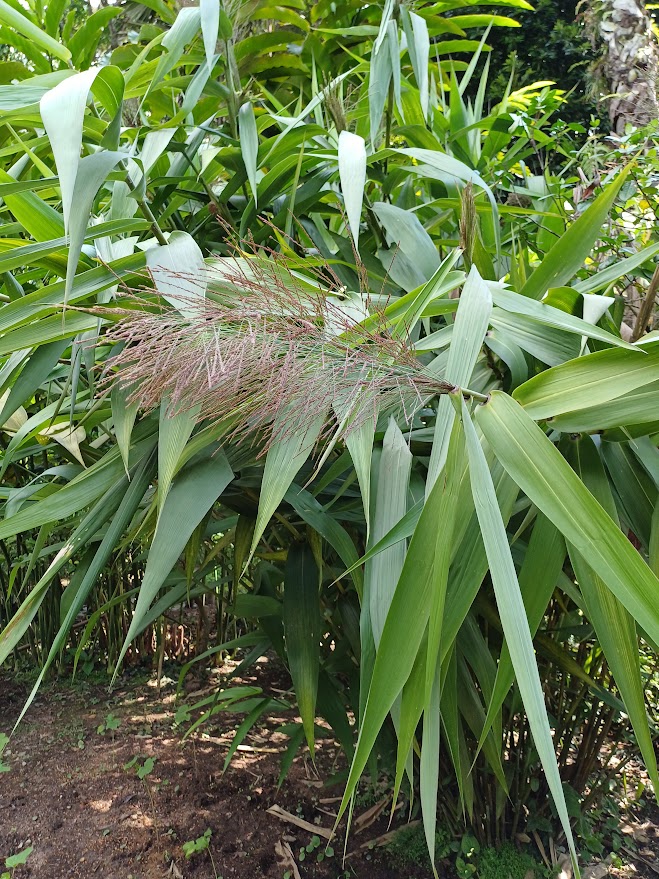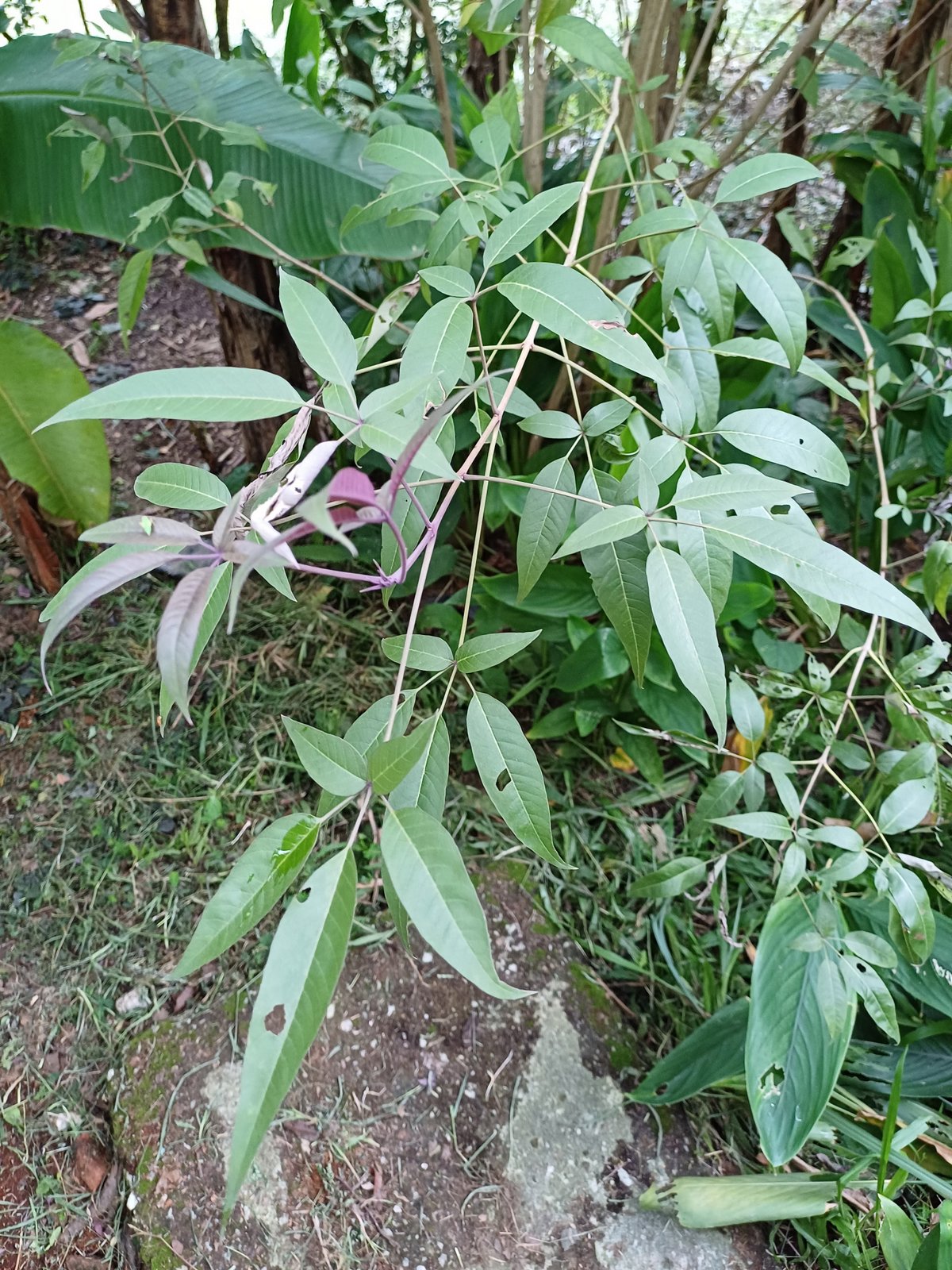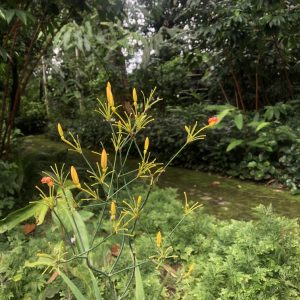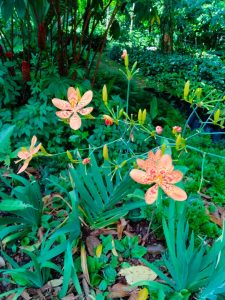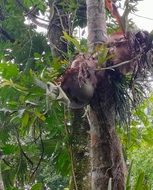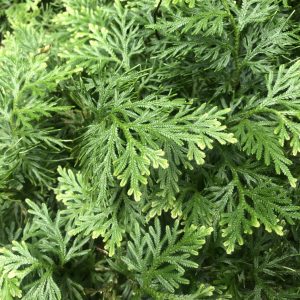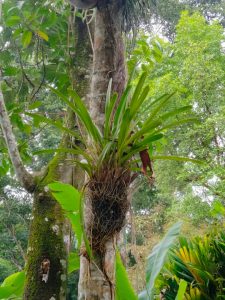Actinorhytis calapparia
ARECACEAE
pinang penawar
Native to New Guinea and Solomon Islands. Tall solitary palm, cultivated in Thailand, Sumatra and Peninsular Malaysia for its purported magical and medicinal powers. Fruit may substitute for betel nut. |  |
Alpinia galanga
ZINGIBERACEAE
lengkuas
Tropical Asia. Cult. Cooking herb. Leaves also boiled and used as a body lotion, or jamu. Essential oil has antiseptic properties. |  |
Amorphophalus sp.
ARACEAE
loki, lokai
Genus of around 80 tuberous herbs found in Old World tropics, two are significant food crops. Poisonous (needle crystals of oxalate of lime) until pounded, grated, boiled. Tuber contains high percentage of starch. Flowers smell of carrion. |  |
Areca catechu
ARECACEAE
pinang sireh, betel
SE Asia. Widely cultivated. Seed treats diarrhea, half-ripe seed pounded for skin ointment. Mild narcotic, sliced endosperm of the seed eaten with betel leaves, lime, gambier or cutch. |  |
Bergera koenigii (previously Murraya koenigii)
RUTACEAE
daun kari
From Indian subcontinent to Southern China and Peninsula Malaya. Leaves used for flavour and fragrance. Mixed with ubat periuk to regulate the menstrual cycle. |  |
Catharanthus roseus
APOCYNACEAE
kemunting cina, Madagascar periwinkle
Madagascar. Contains vincristine and other alkaloids with retarding effect on leukemia. Decoction of leaves drunk to relieve menstrual pain & applied for insect bites. |  |
Citrus hystrix
RUTACEAE
limau purut
Leaf blade 1-2″ long, almost as wide, slightly toothed: leaf stalk widely winged, as to appear like the other half of a blade divided in two. Fruit has wrinkled skin, used for ritual bathing. Rind used in ubat jamu to drive away evil spirits, worms in children and headache. Leaf an essential ingredient in cooking. |  |
Clerodendron fragrans
VERBENACEAE
pokok rabu kambang, exhilaration tree
China. Used by Malays for rheumatism and ague, or with other substances for treating skin diseases. |  |
Curcuma aeruginosa
ZINGIBERACEAE
temu hitam
Burma, Indo China. Cultivated. Rhizomes used in postnatal tonics and jamu (traditional health tonic). |  |
Curcuma longa
ZINGIBERACEAE
kunyit, turmeric
SE Asia, precise origin unknown. One of the oldest spice plants known, dried rhizomes ground for curries, dyes, used to relieve flatulence and diarrhea. |  |
Cymbidium finlaysonianum
ORCHIDACEAE
boat orchid, bunga candarek
A common and attractive species, self-seeding in urban settings. | 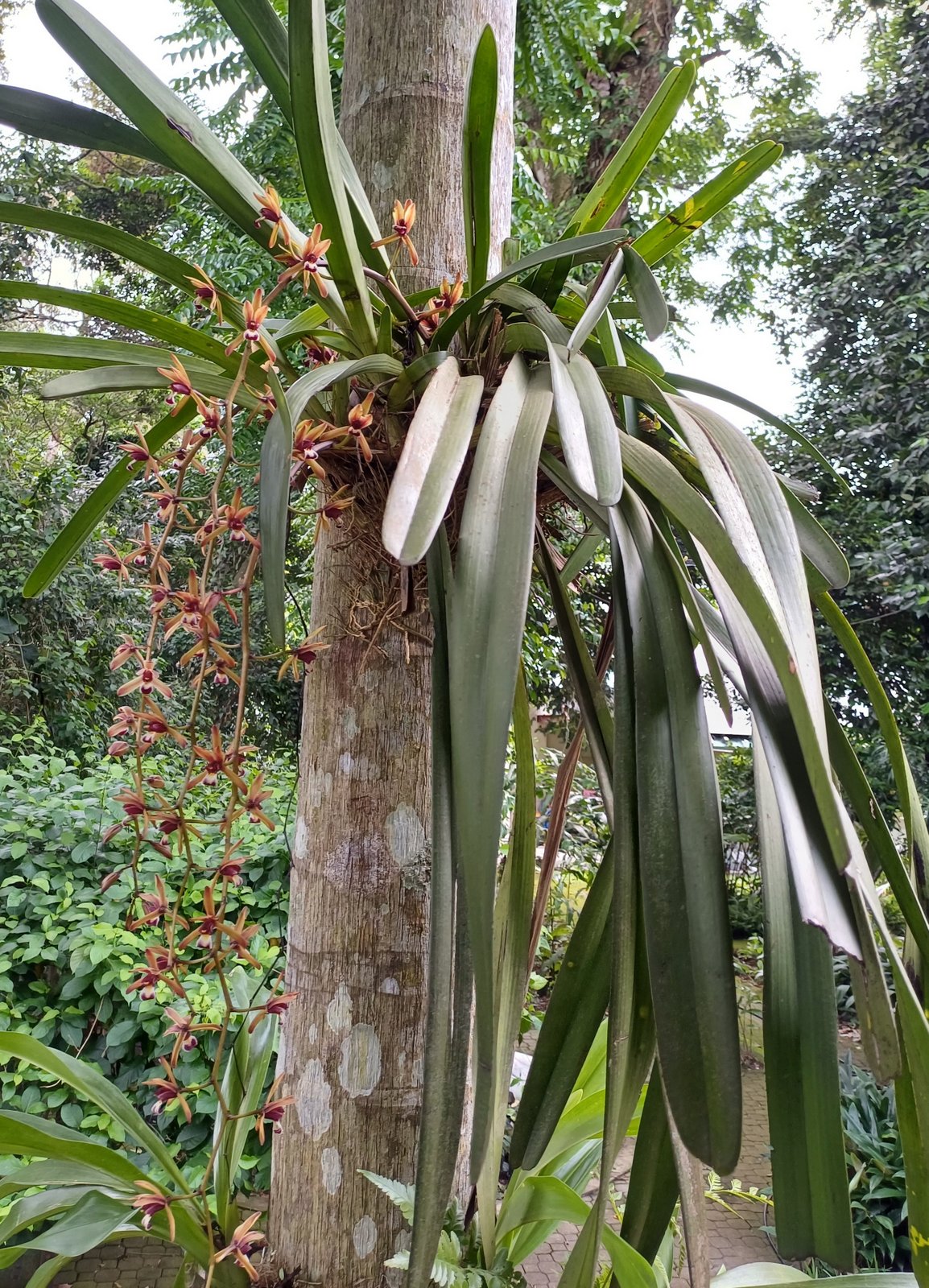 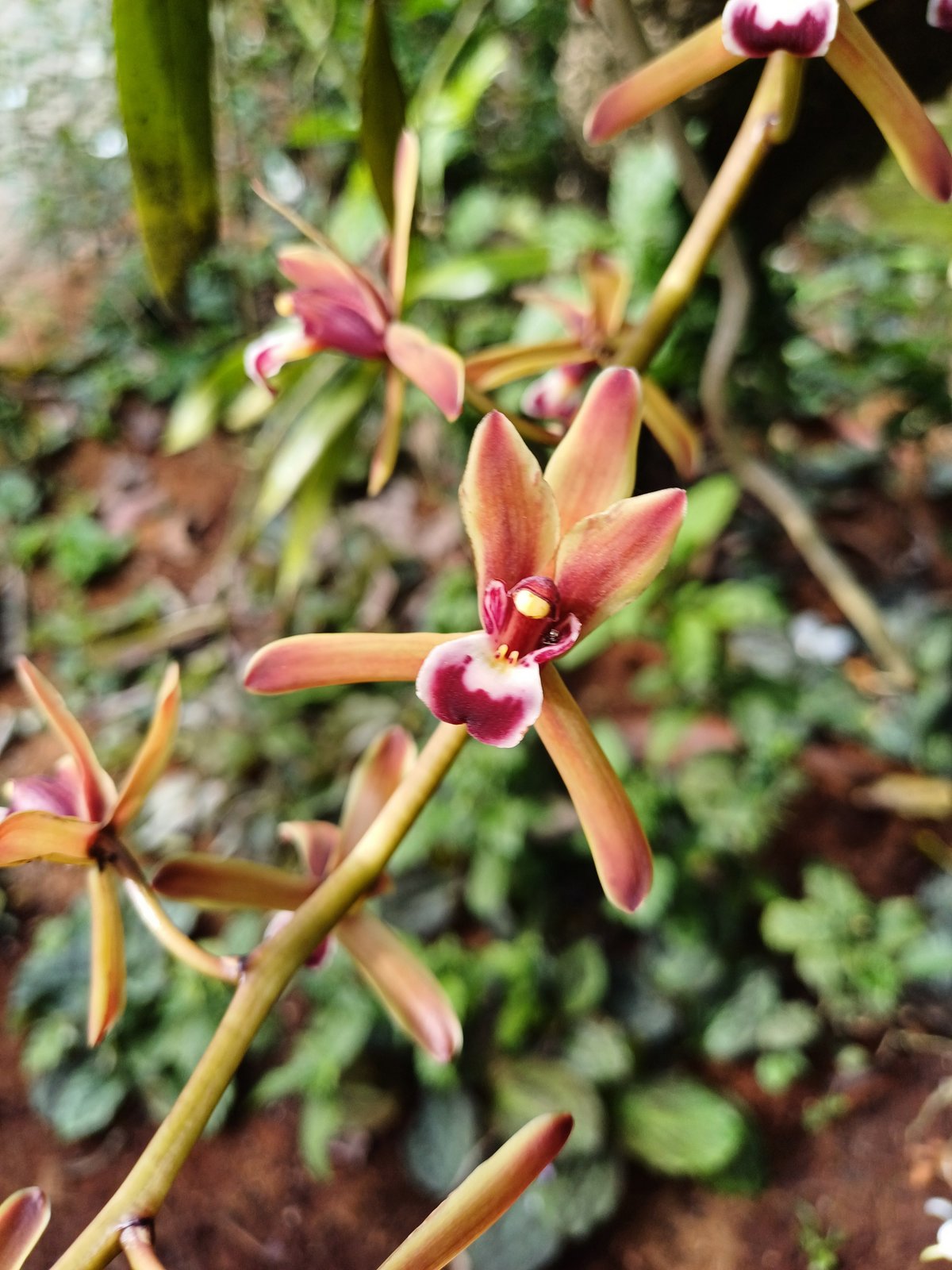 |
| Dracaena sp. | 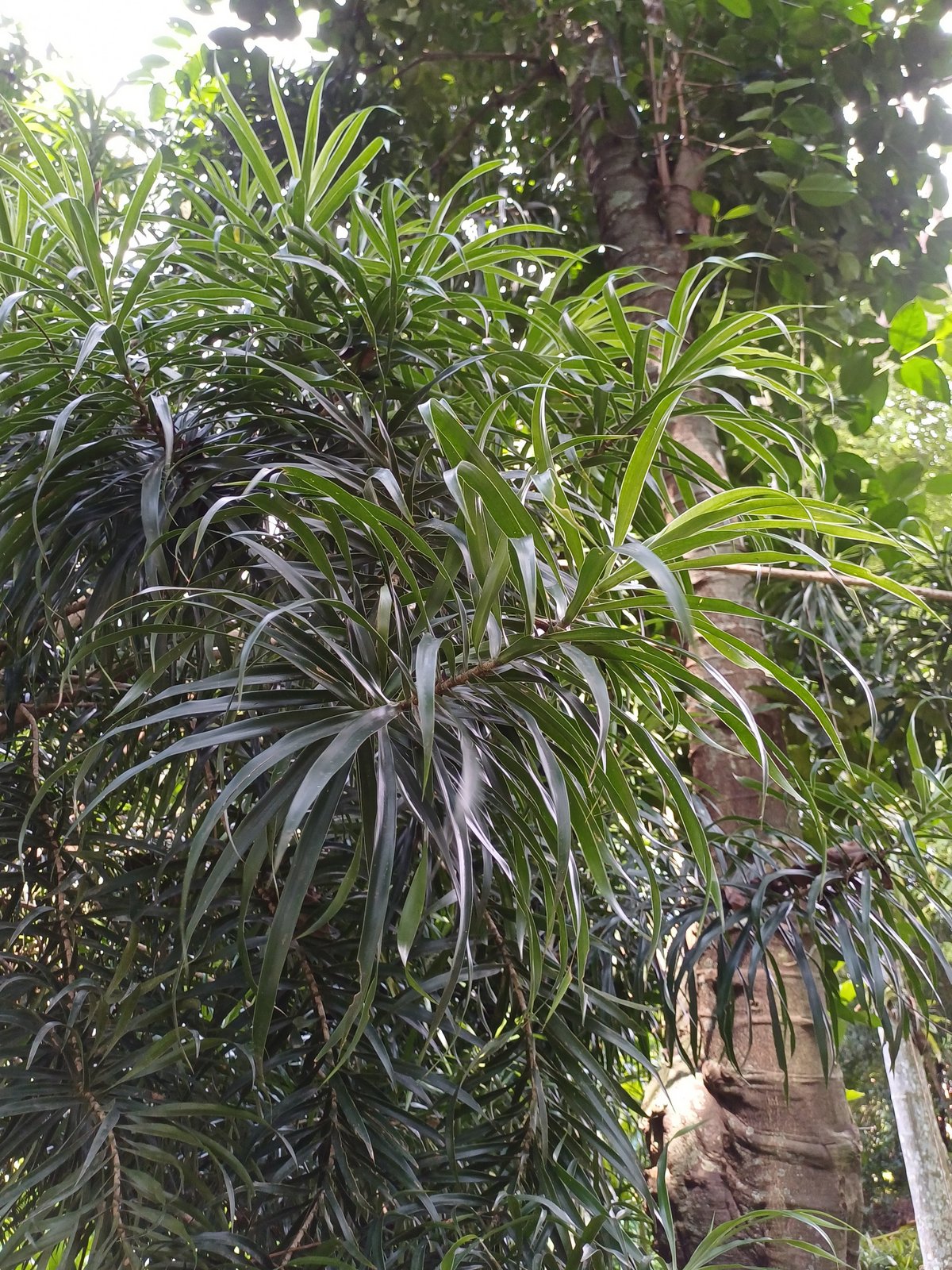 |
Etlingera elatior
ALPINIEAE
kantan
Mauritius. Of all gingers in the peninsula, Etlingeras have the most colorful inflorescence and fruits, but this introduced species is widely used for its edible flower cooked in laksa and sliced in salads. |  |
Etlingera fulgens
ALPINIEAE
Native to Southern Thailand and Peninsular Malaysia. Cultivated as an ornamental plant due to the leaf’s striking red underside. |  |
Euricles amboinensis
AMARYLLIDACEAE
sepenoh
Seashore plant through archipelago. Cultivated as a magic plant; Malays use leaves in magic brush to sprinkle consecrated rice-gruel in harvesting, fishing and wedding ceremonies. Plant expels ghosts and evil spirits from house. Leaves applied to swellings, bulb to relieve oppression. |  |
Eurycoma longifolia
SIMAROUBACEAE
tongkat ali | 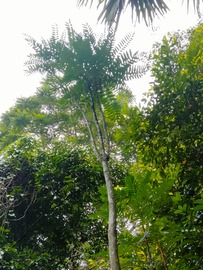 |
Freycinetia montana
PANDANACEAE
pandan tikus
SE Asia to Pacific. 6 spp. in Malaya. Stems slender and climbing by means of air roots; inflorescence bract brightly coloured. Used in jamu and for women’s ailments. |  |
Gnetum gnemon
GNETACEAE
belinjau, meninjau
Cultivated, seasonal, most likely introduced from eastern Indonesia. Fruit edible, seed roasted, flattened, dried and fried for empeng crackers. |  |
Hedychium coronarium
ZINGIBERACEAE
gandasuli, ginger lily
Native to Asia. White fragrant flowers, reminiscent of jasmine. Flourishes near streams and waterlogged areas. Decoction of leaves drunk for indigestion. Leaves eaten with betel to treat abdominal pains. Stem sap applied to soothe swellings. | 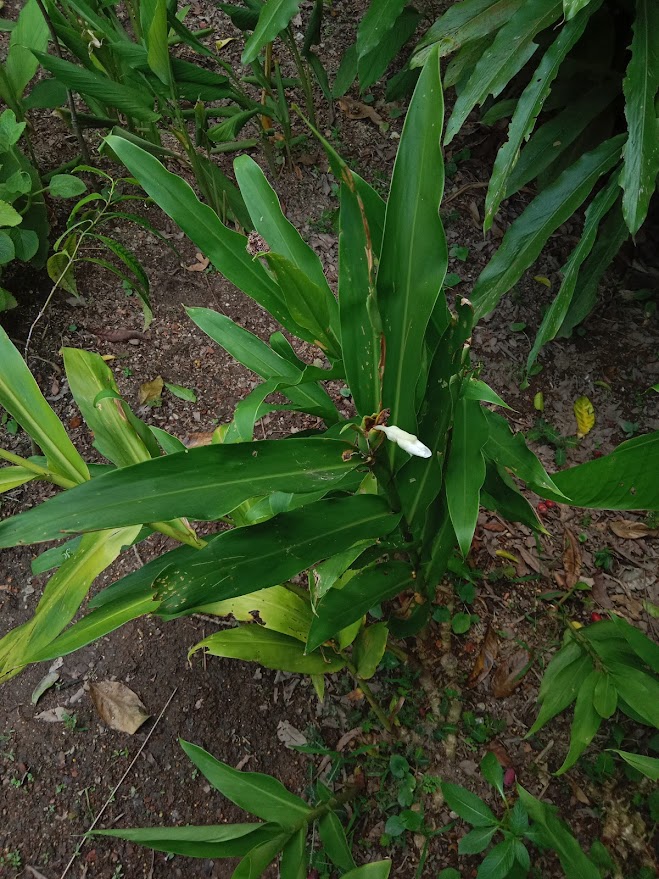 |
Ixora javanica
RUBIACEAE
bunga jejarum, pecah periuk
Eastern Himalayas to West Malesia. | 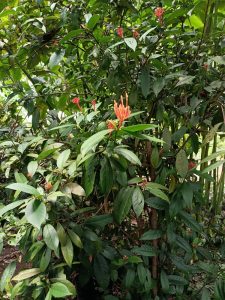 |
Indigofera suffruticosa
FABACEAE
Tropical & subtropical Americas. Grown from seed imported from the US, with the hopes that it would provide indigo dye for our resident artists, but there are many species of Indigofera and this has not proven to be an effective dye plant. | 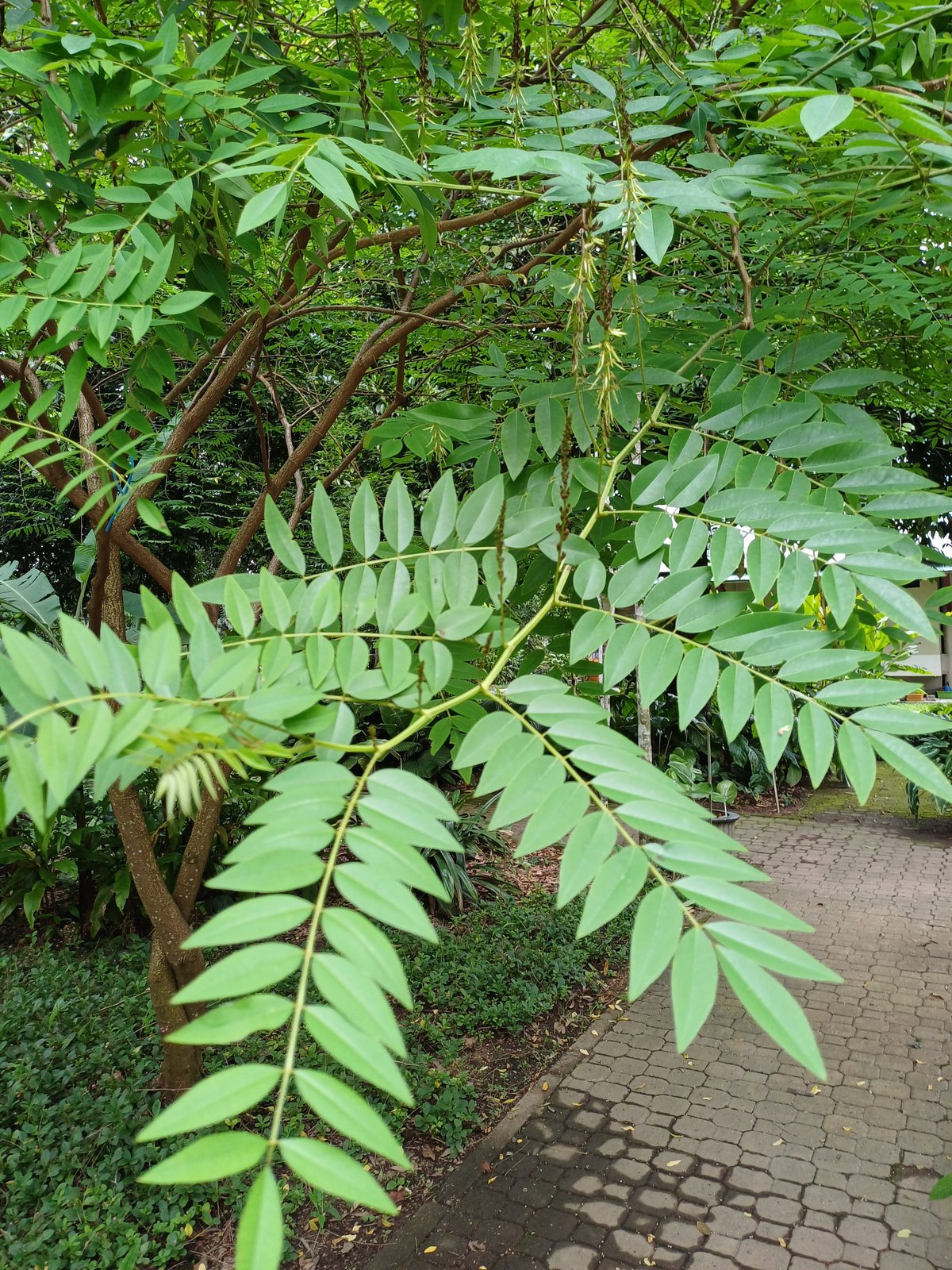 |
Kaempferia pulchra
HEDYCHIEAE
Malaya. Small herbs with short rhizome and tuberous roots, flowers arise in midst of a few leaves. | 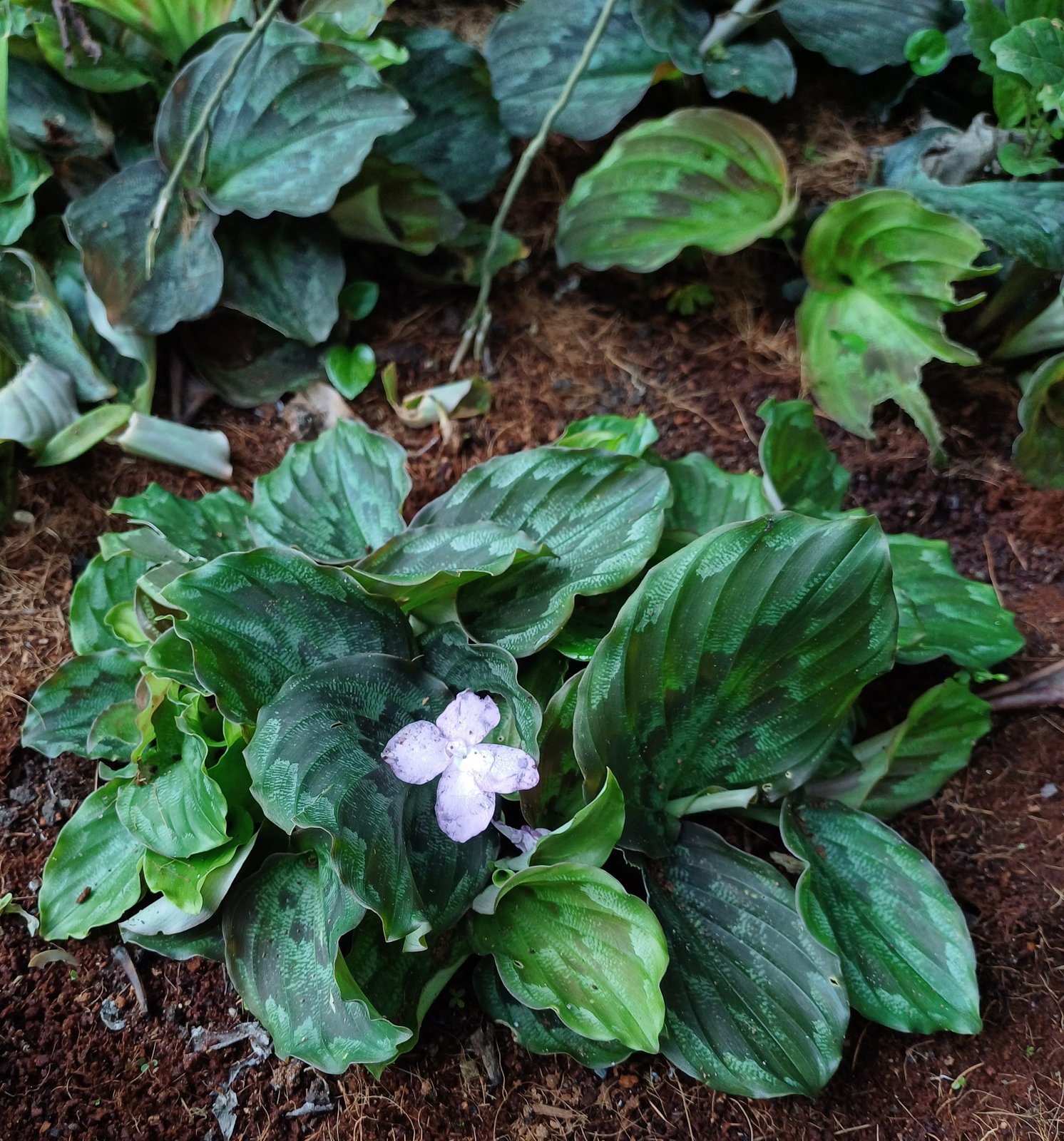 |
Licuala orbicularis
ARECACEAE (PALMAE)
parasol palm, daun nisang | 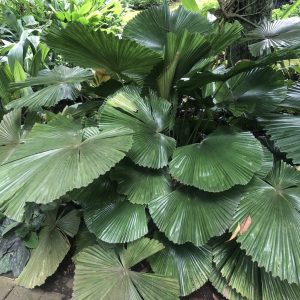 |
Lycoris radiata
AMARYLLIDACEAE
bawang jabu
Myanmar to S. China. Bulbs cleaned , crushed and boiled. Decoction drunk to relieve fevers and coughs. White flowers open late afternoon, smell of dusty rooms. |  |
Mentha arvensis
LABIATAE
pudina, mint
Europe, east through Russia, south to India. For headaches, pound leaves with lime juice, apply paste to forehead. Boil leaves to make a cough mixture. |  |
Musa beccarii
MUSACEAE
Endemic to Sabah. May be cultivated in ornamental setting for its red flowers. | 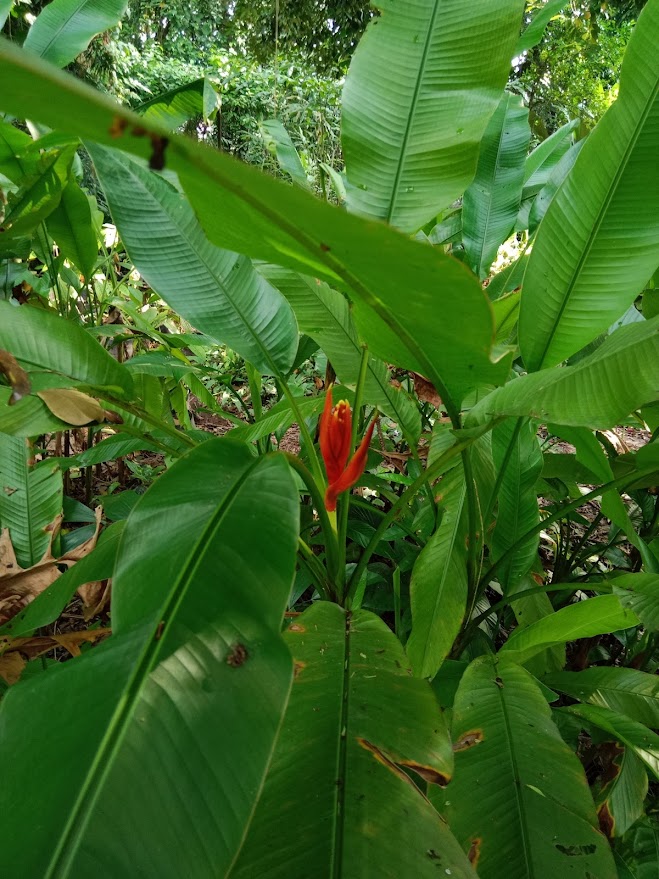 |
Phaleria macrocarpa
THYMELAEACEAE
mahkota dewa
West New Guinea, a small tree which produces red eclipsed-shaped fruit. The white pits are poisonous however parts of the plant are used to treat rashes and diarrhea.
POISONOUS – DO NOT EAT | 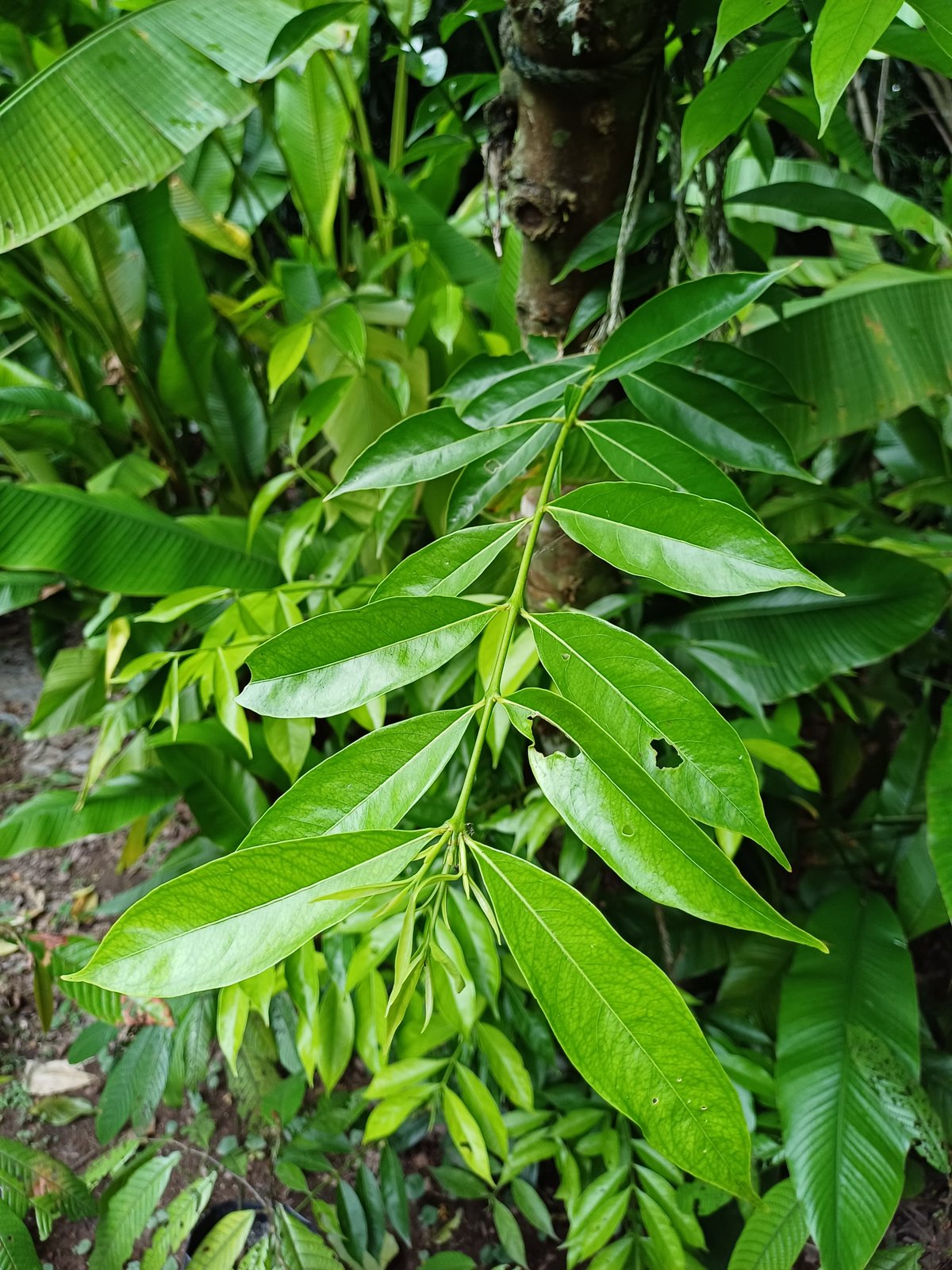 |
Plectranthus amboinicus
LAMACEAE
bangun bangun, po hor, Indian borage
NE Africa. Cult. from India to SE Asia. Decoction used to treat asthma, fever, nausea, rheumatism, colic, urinary tract infections cough, epilepsy and convulsion. Boil with rock sugar for sore throat. |  |
Polygonum minus
POLYGONACEAE
kesum
Old World tropics. Cooking herb. All parts used in post-natal tonics. Leaves used to treat indigestion (boil and drink) and dandruff (pound leaves, extract oil, mix with water & apply to scalp for a few minutes). | 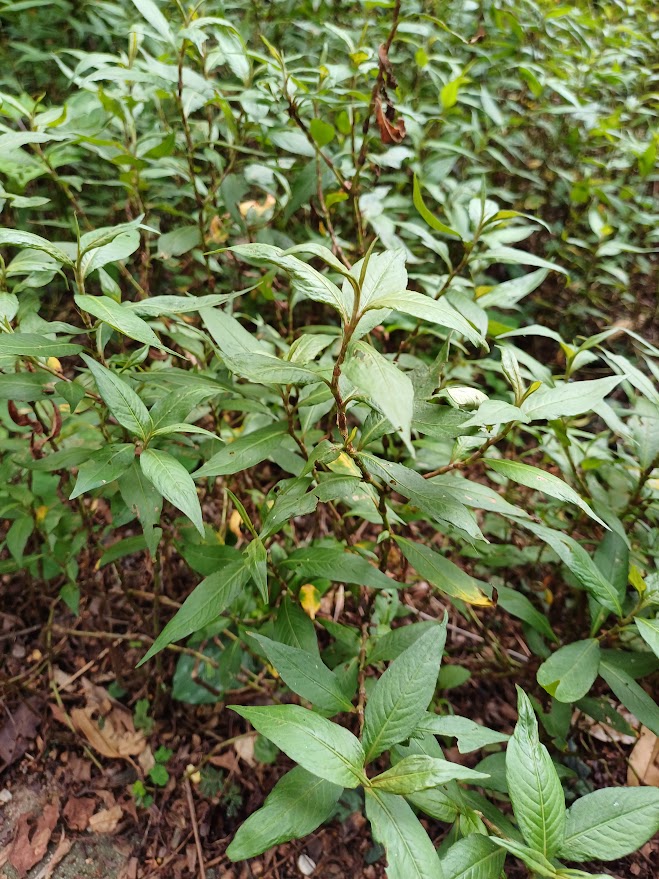 |
Talinum paniculatum
TALINACEAE
jewels-of-opar
Native to the Americas, cultivated in Southeast Asia as vegetable and for medicinal properties. Harvested for its edible leaves and used in ornamental settings. | 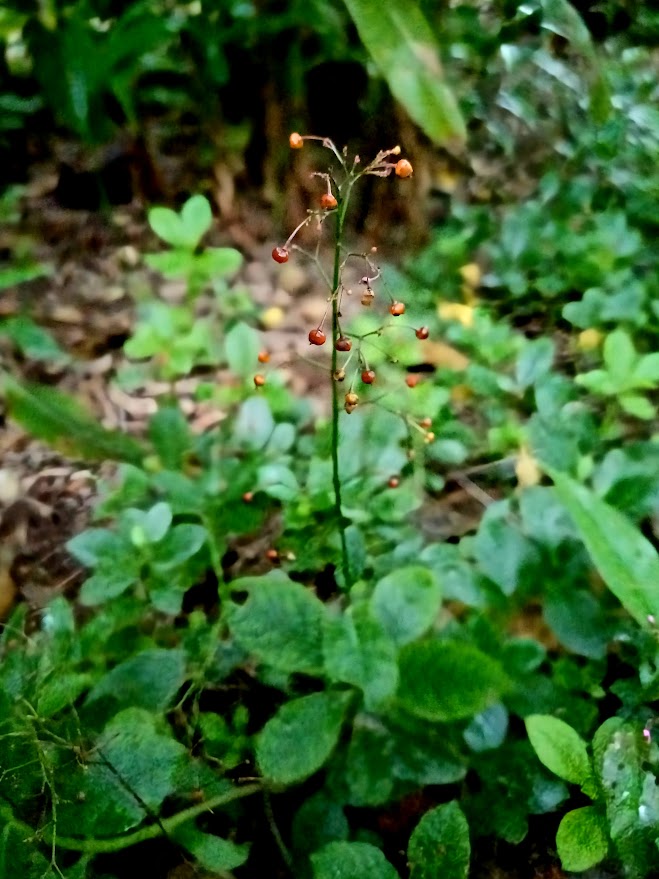 |
Tinospora crispa
MENISPERMACEAE
patawali
India~Indo-China, Malaya, Philippines, Java. Antibacterial and antimalarial. Treats stomach ache, fever, gonorrhea and for deworming. Boil the stem and strain, drink once a day. Antiseptic: pound stem with sulphur and apply to wound. |  |
| C. K. Lim ginger |  |





